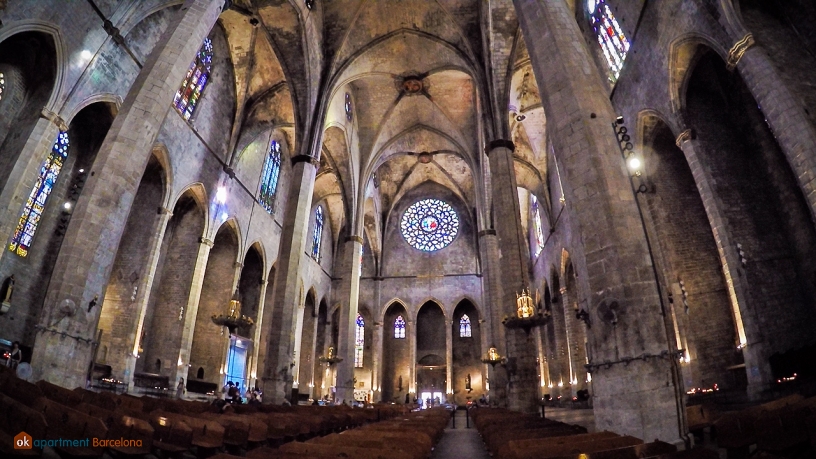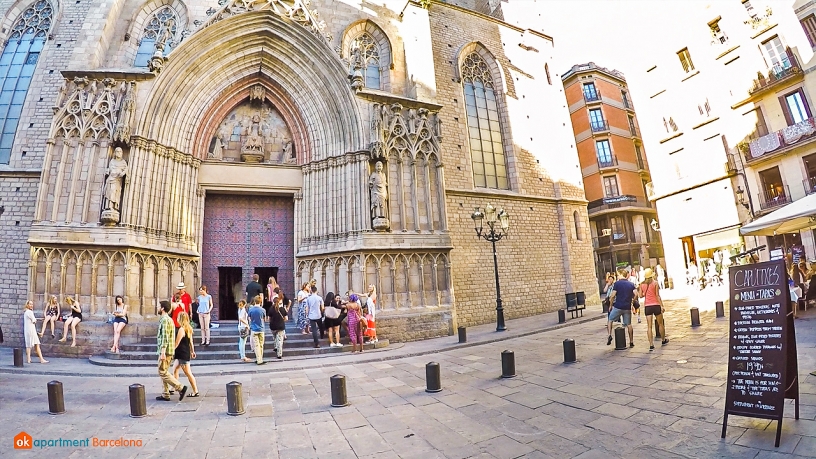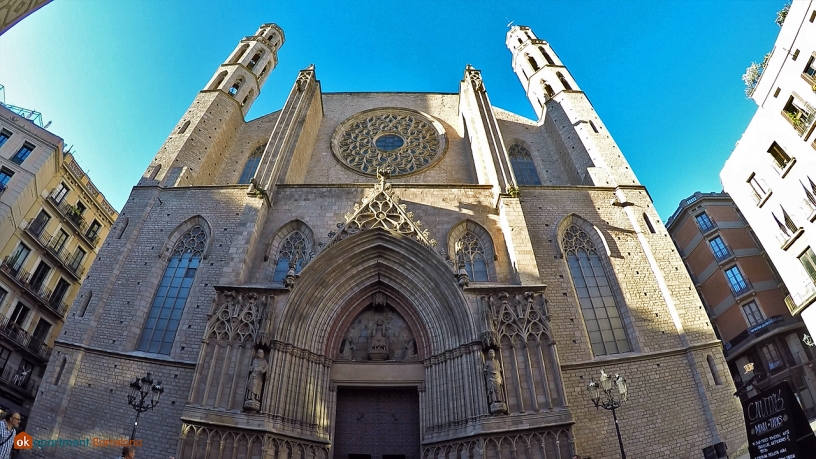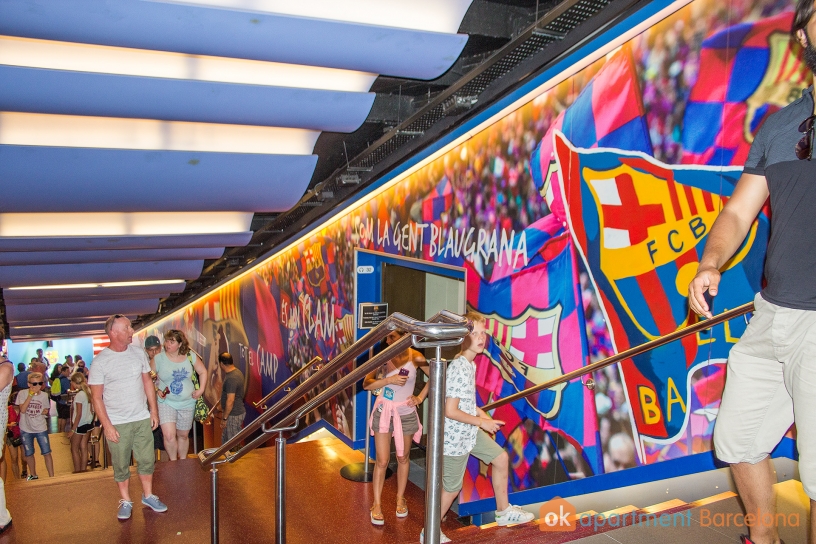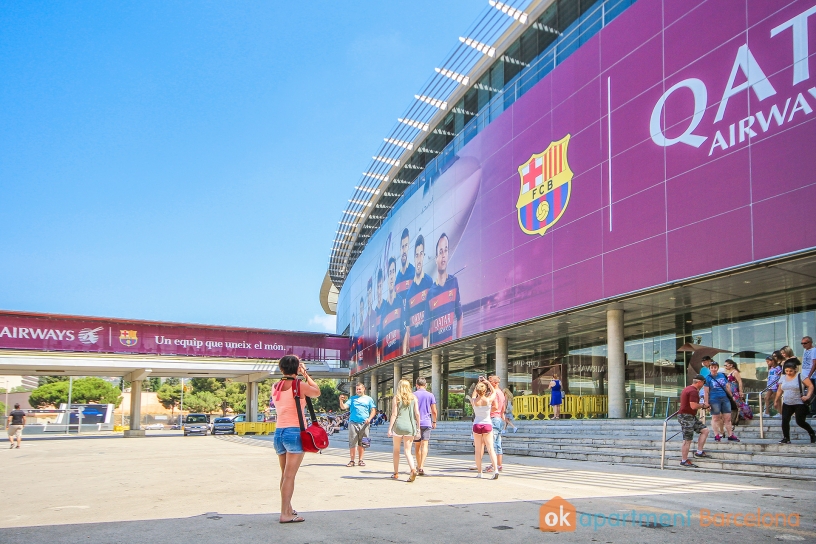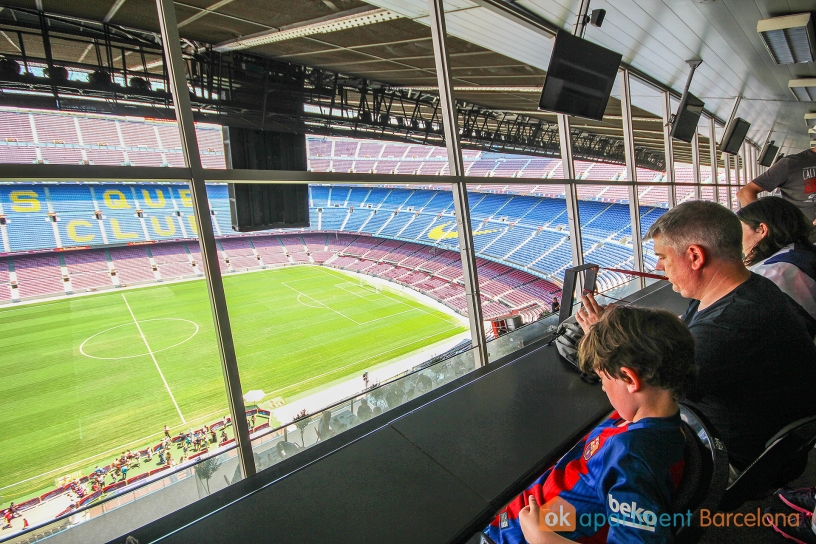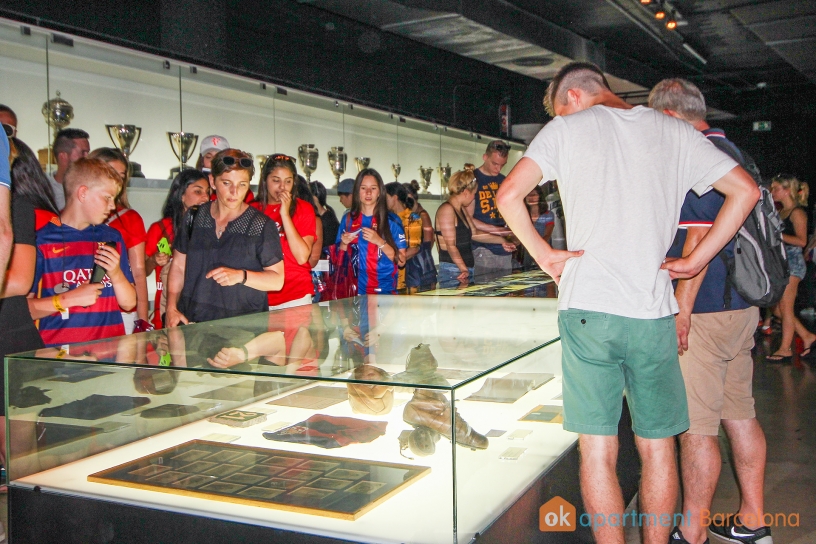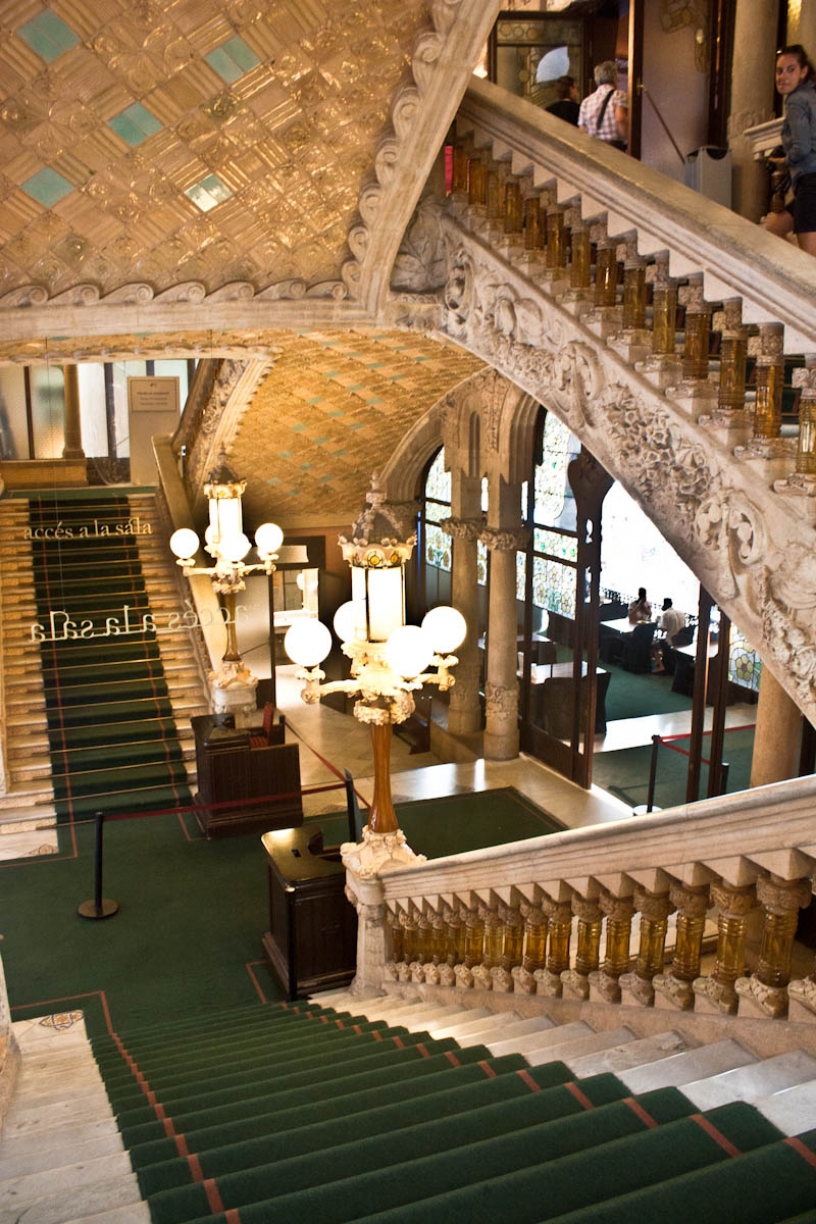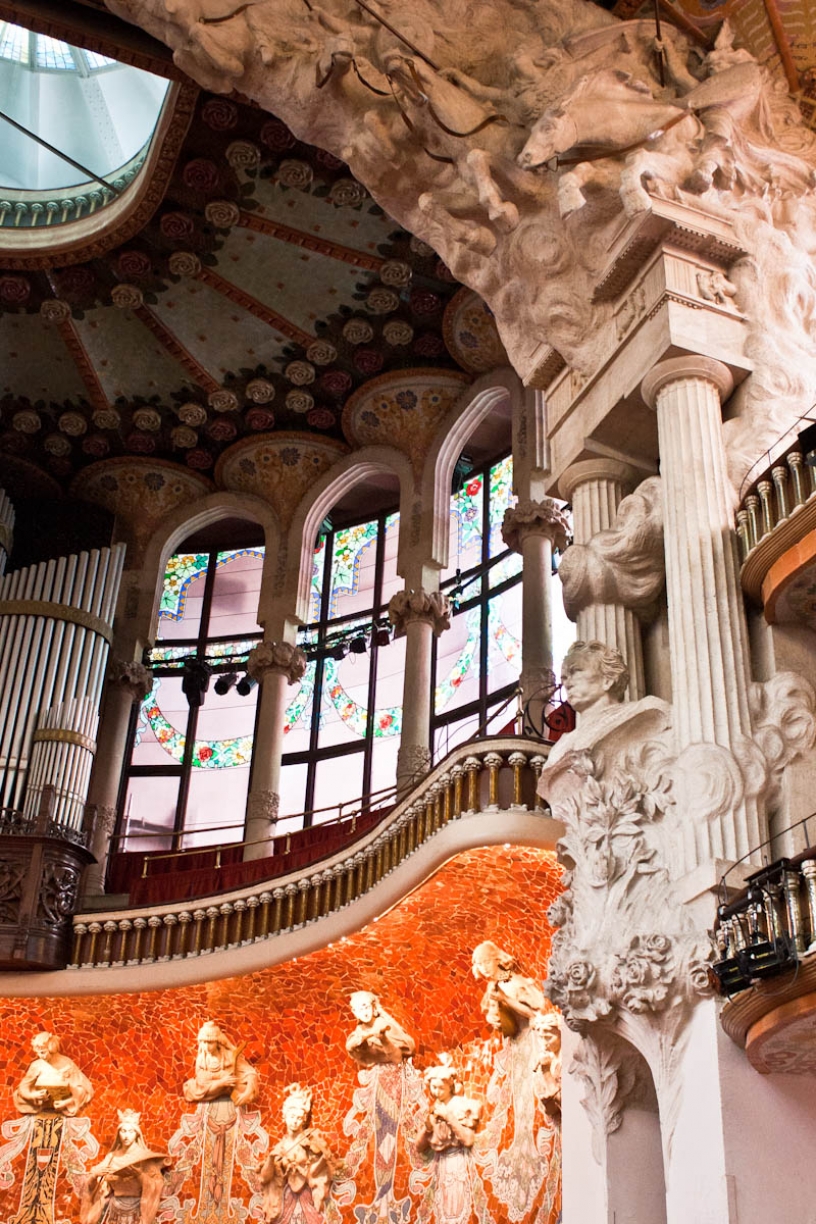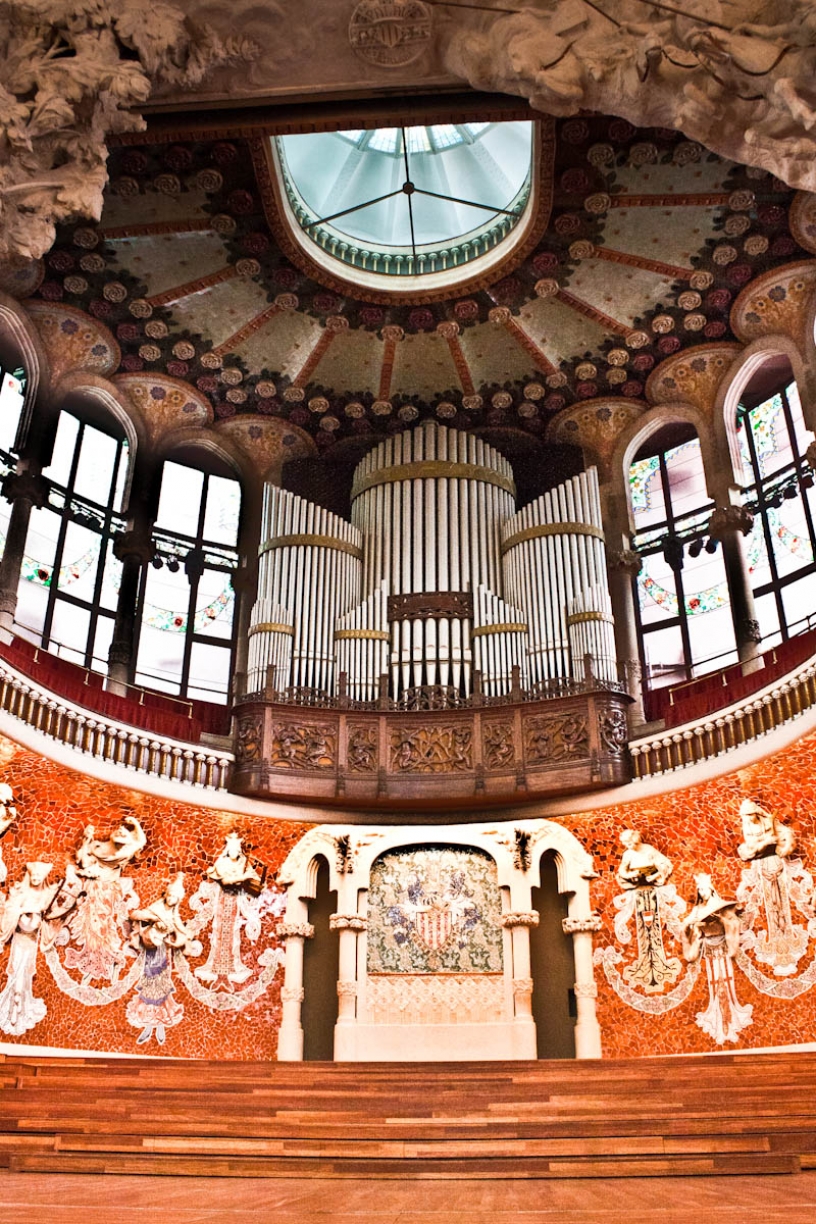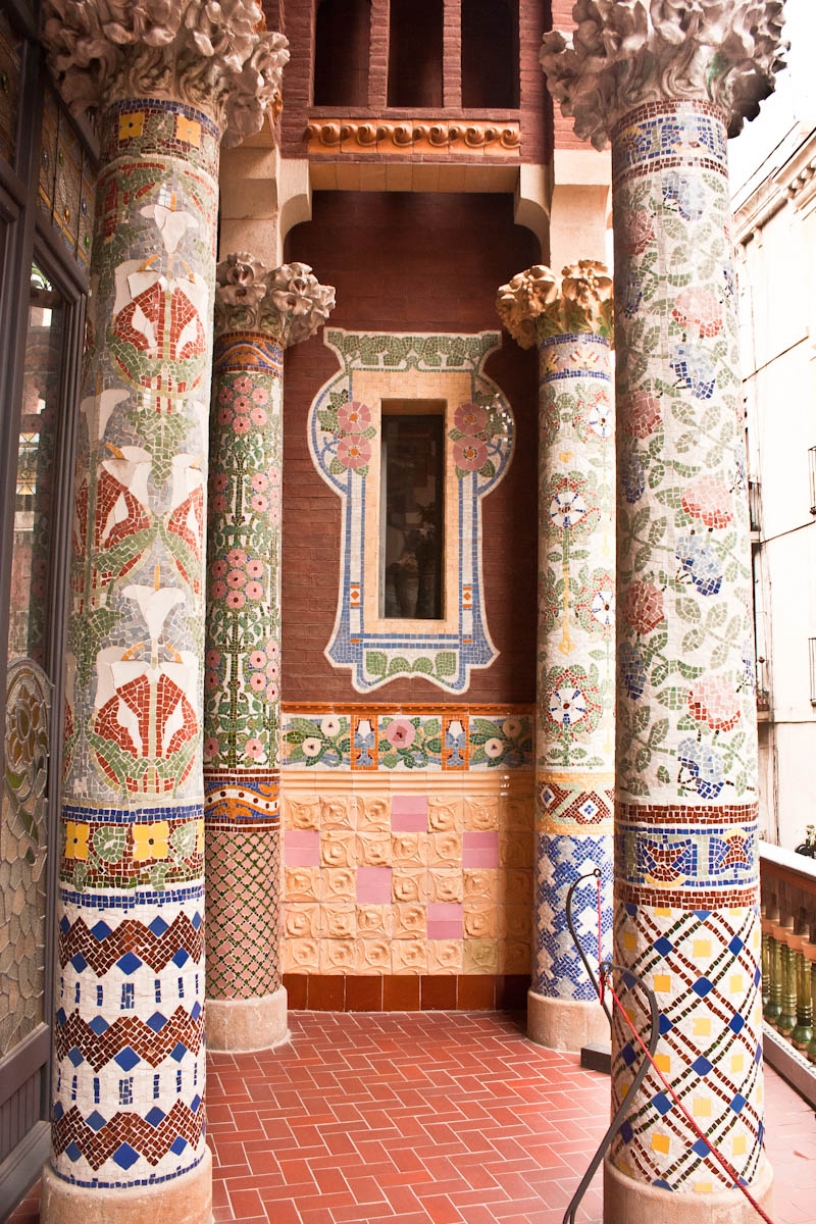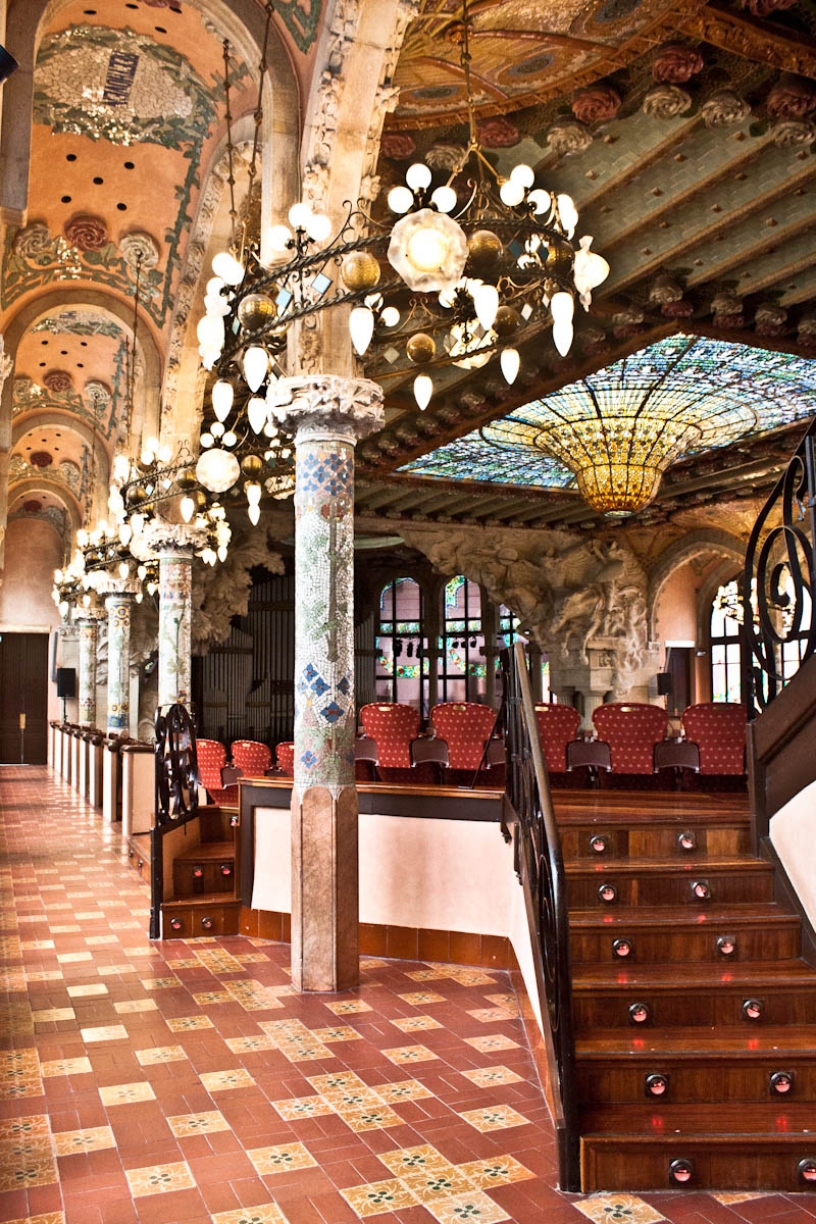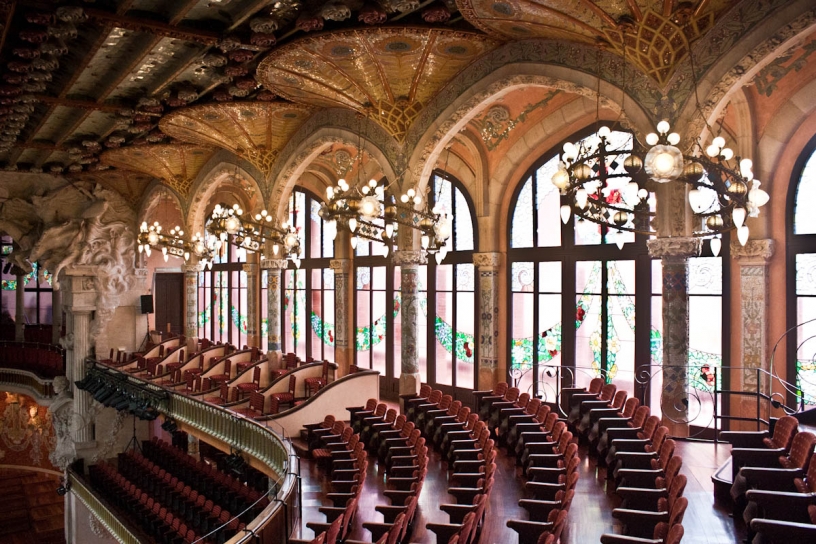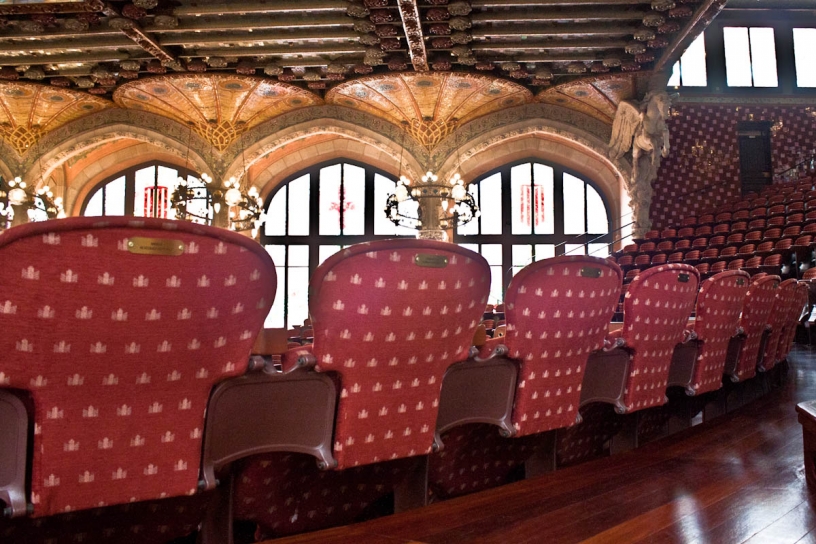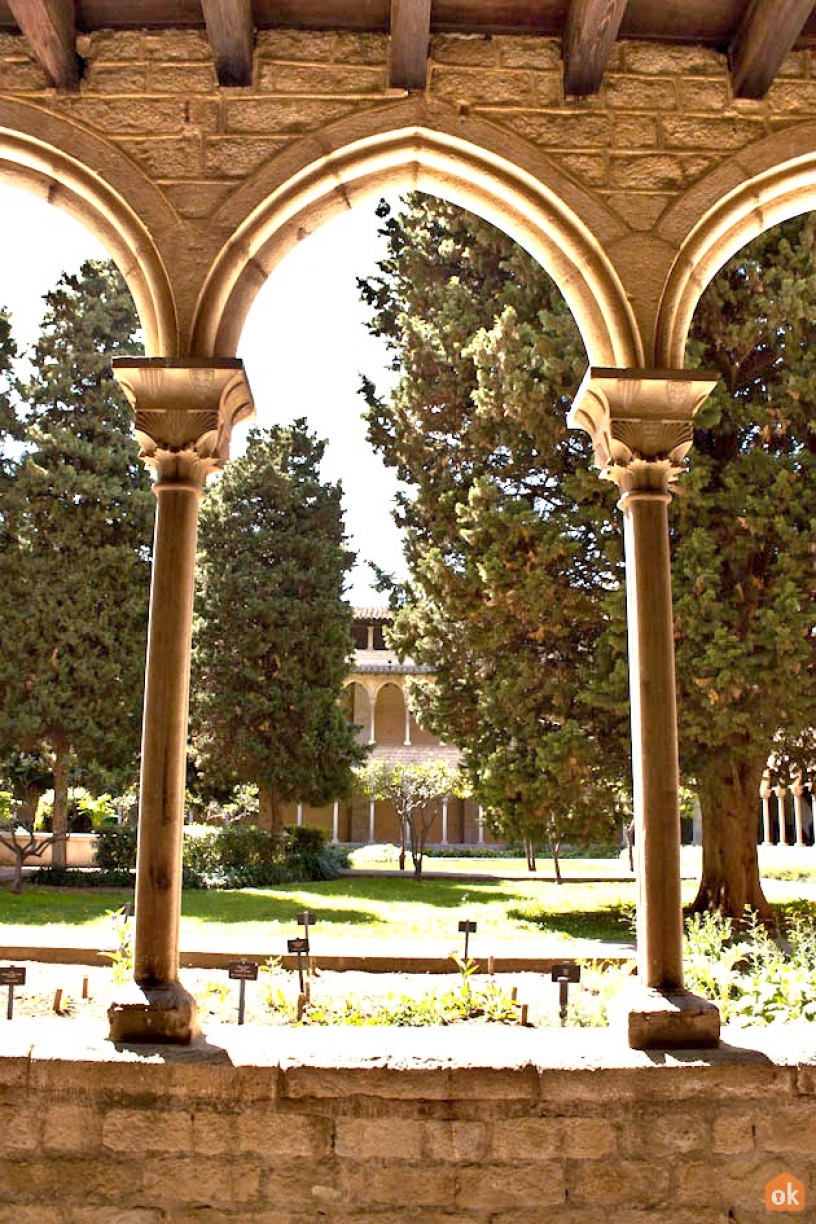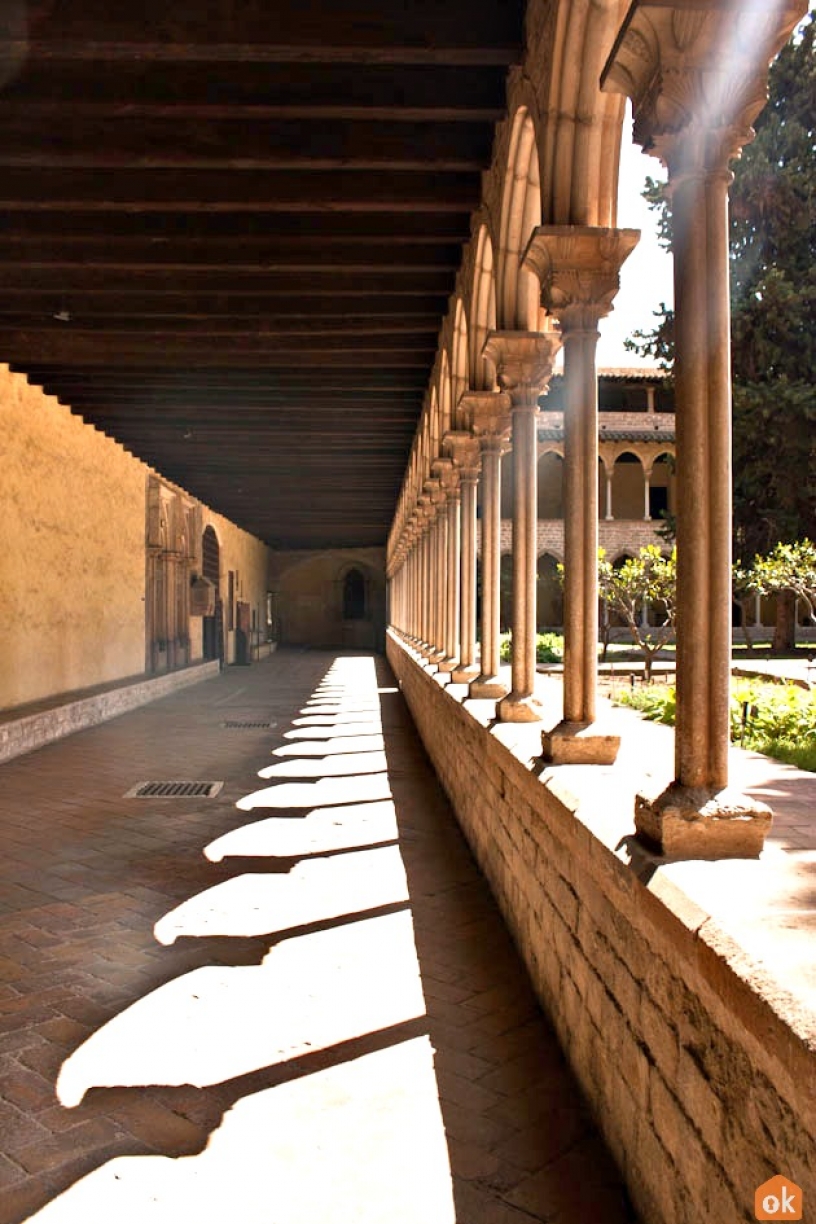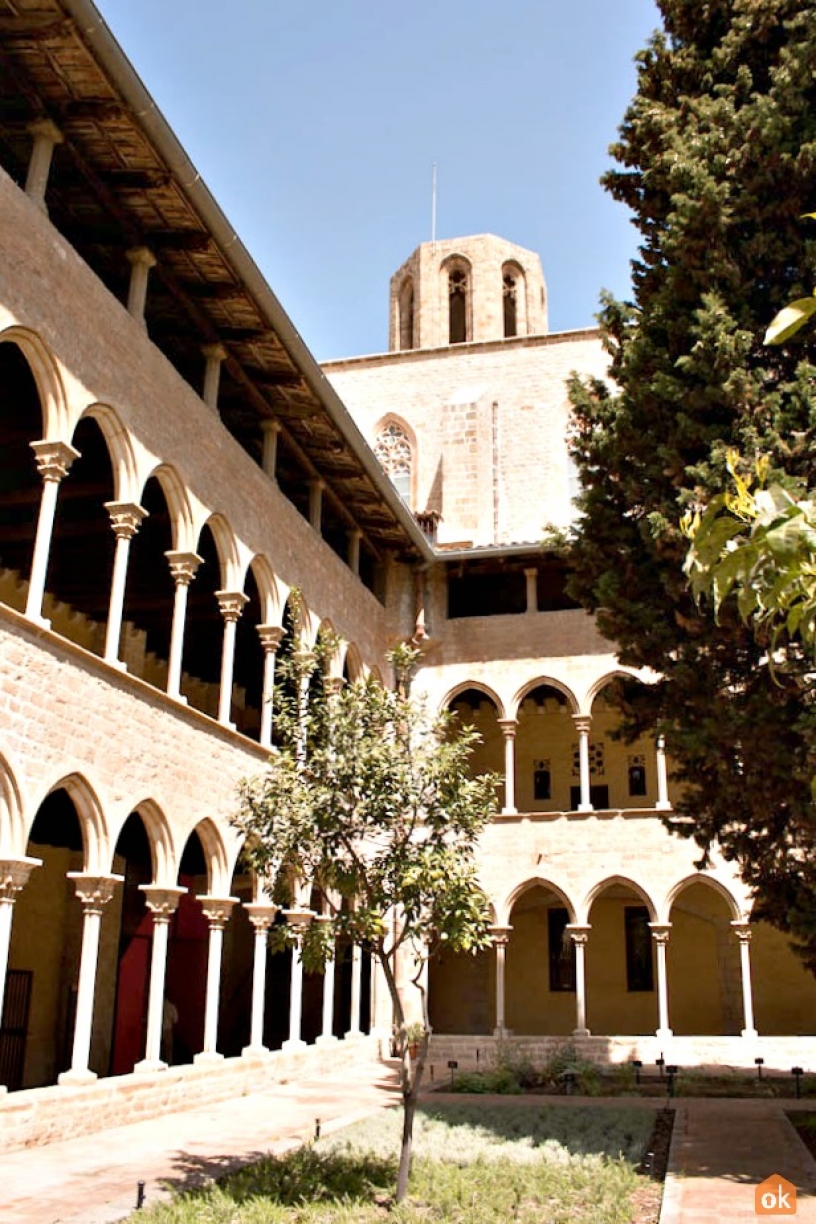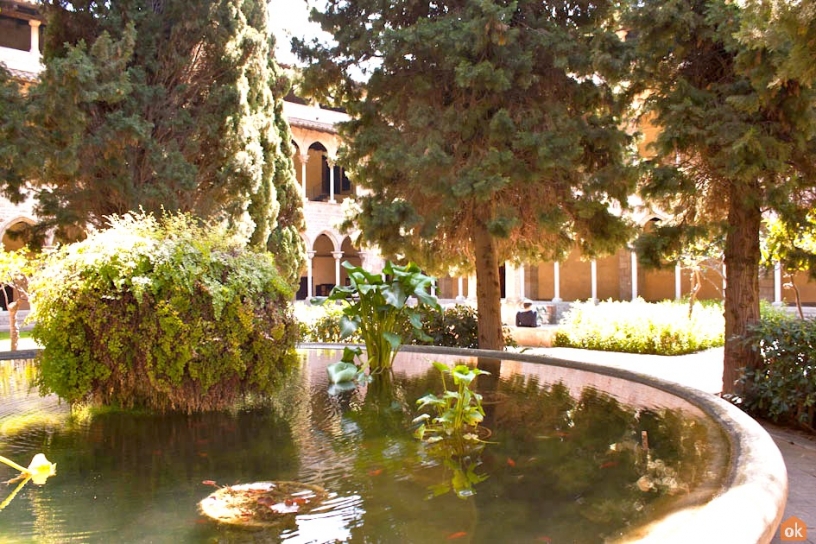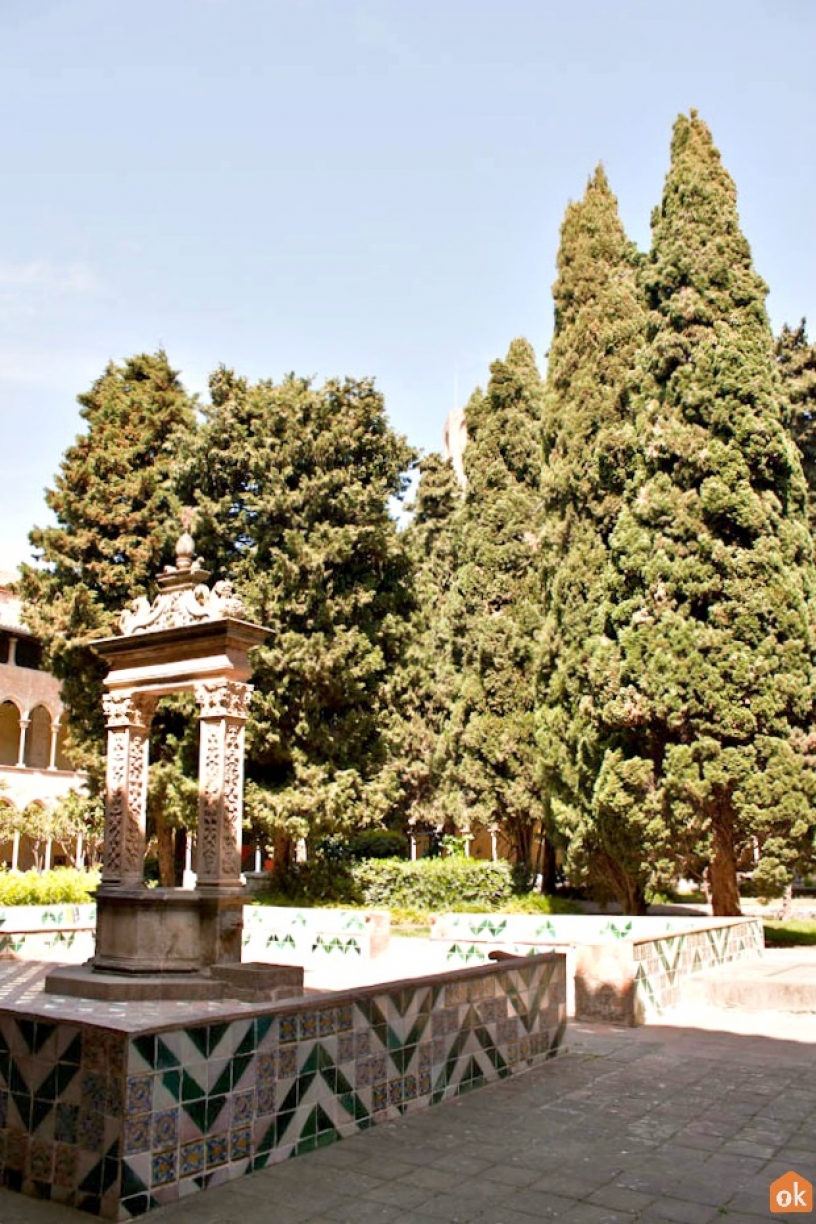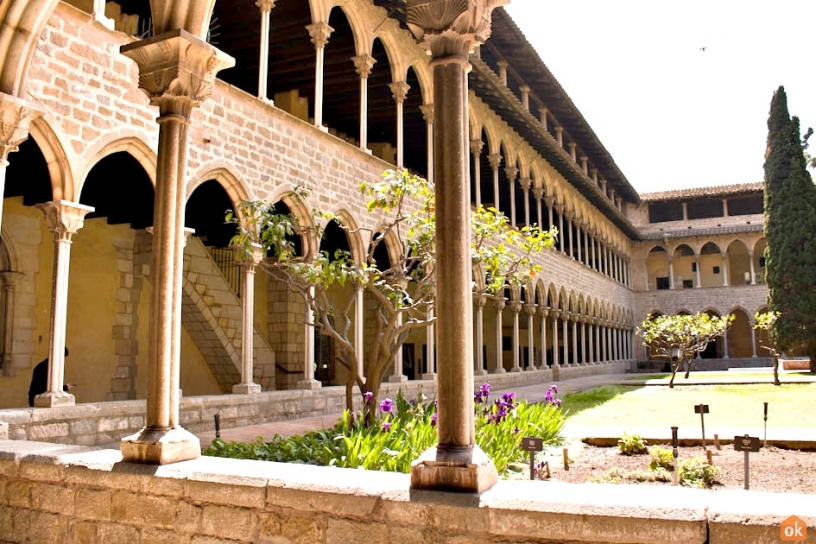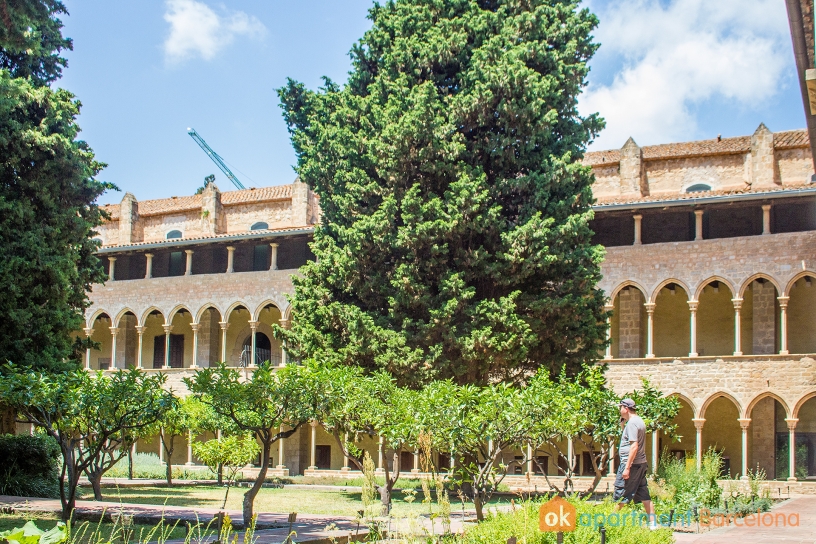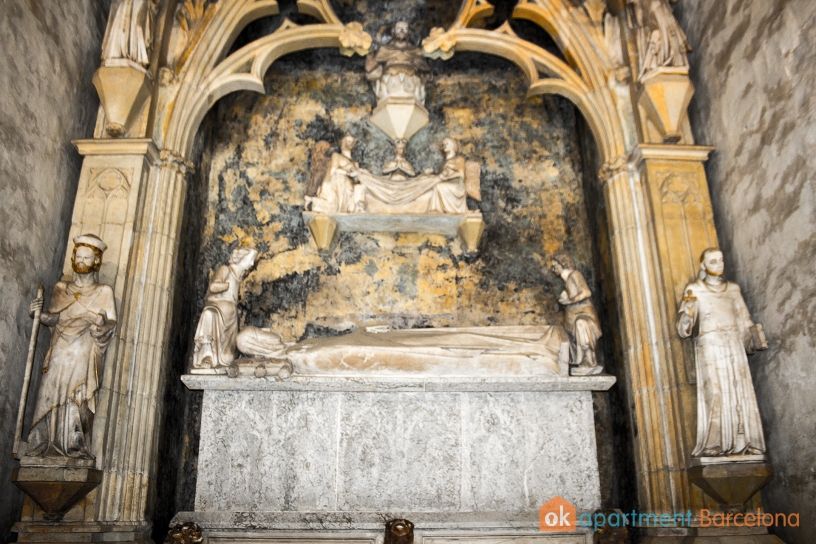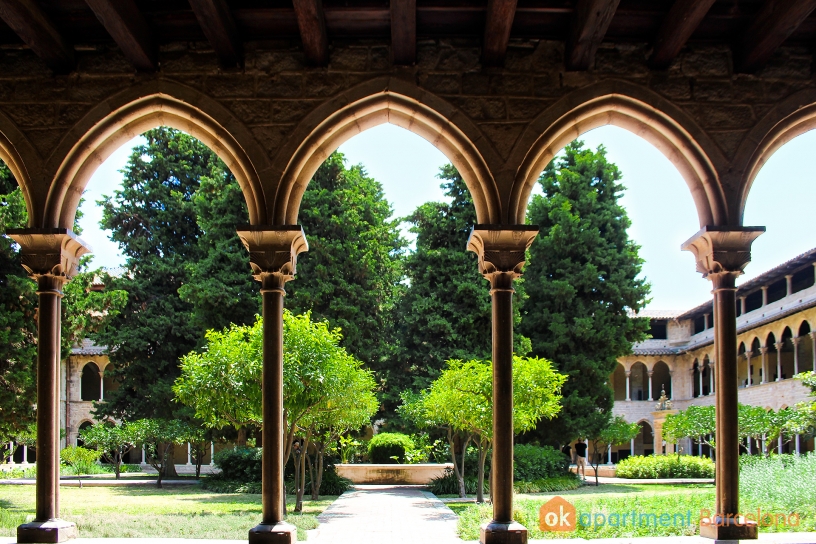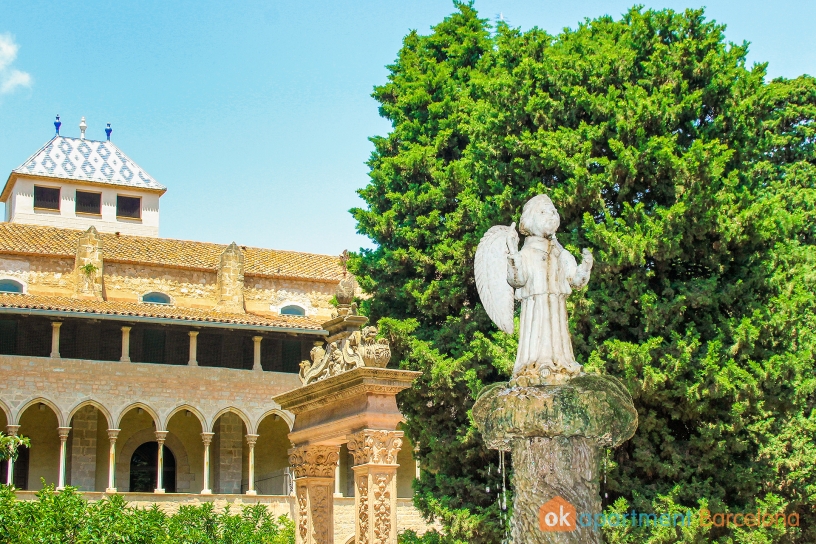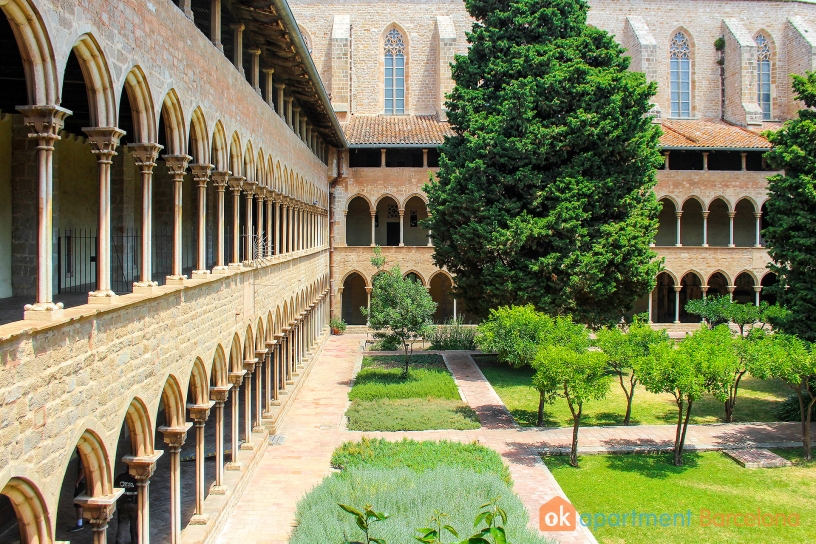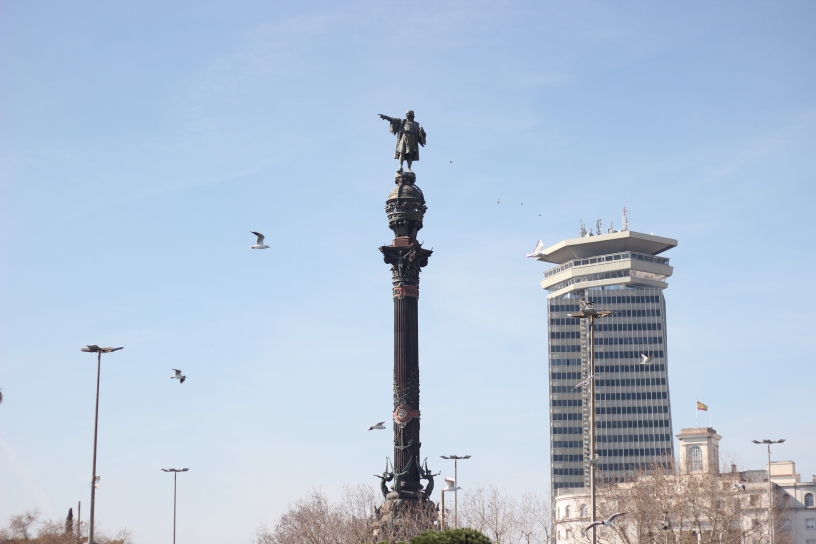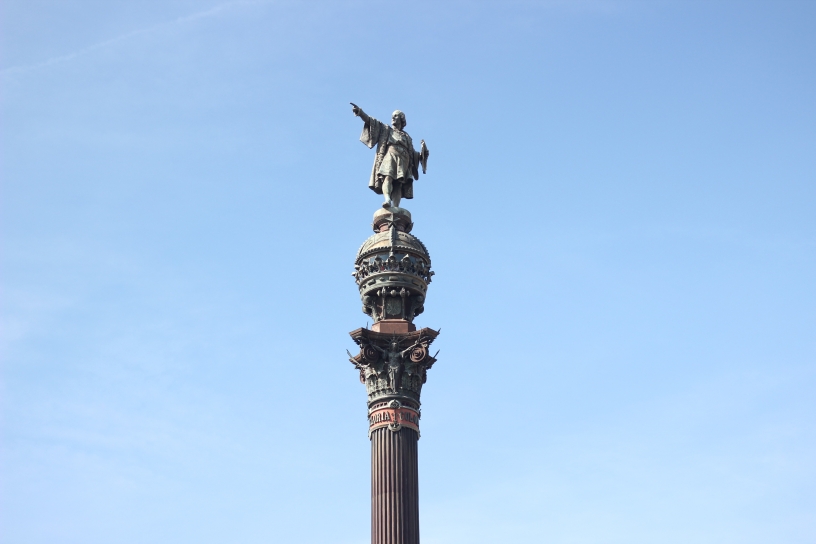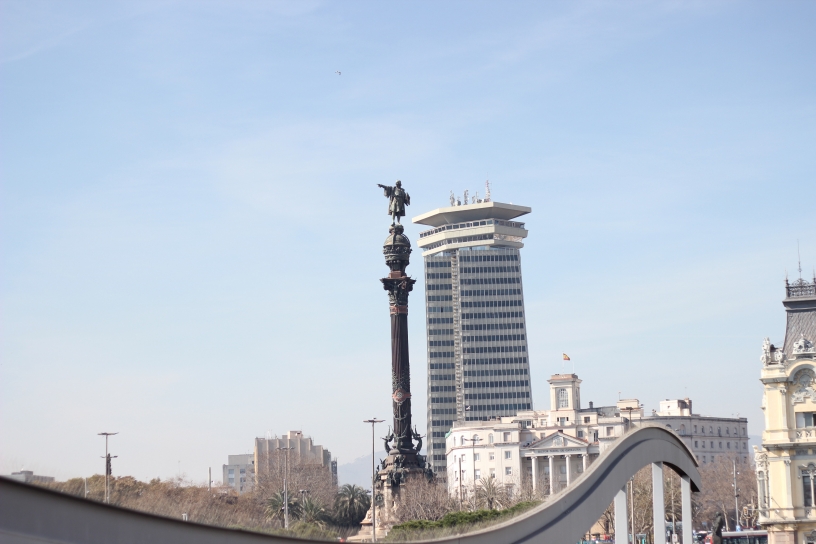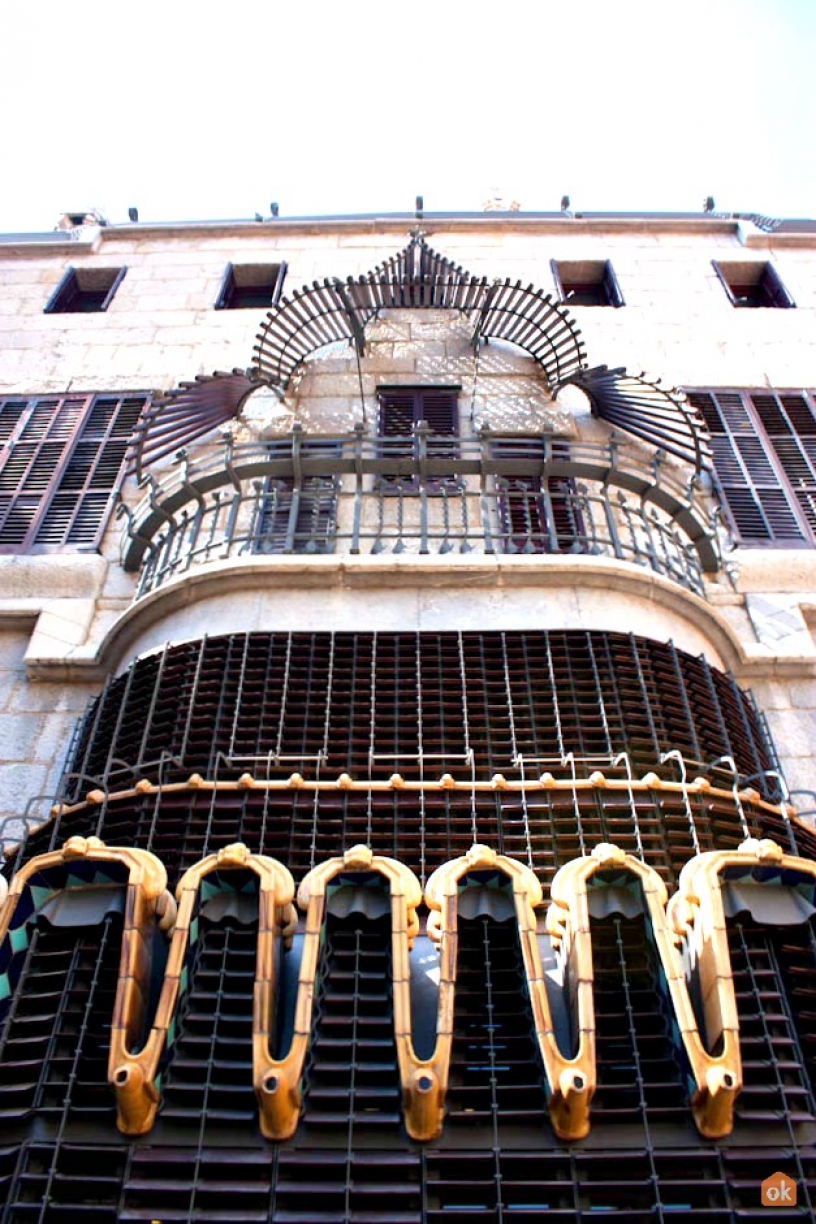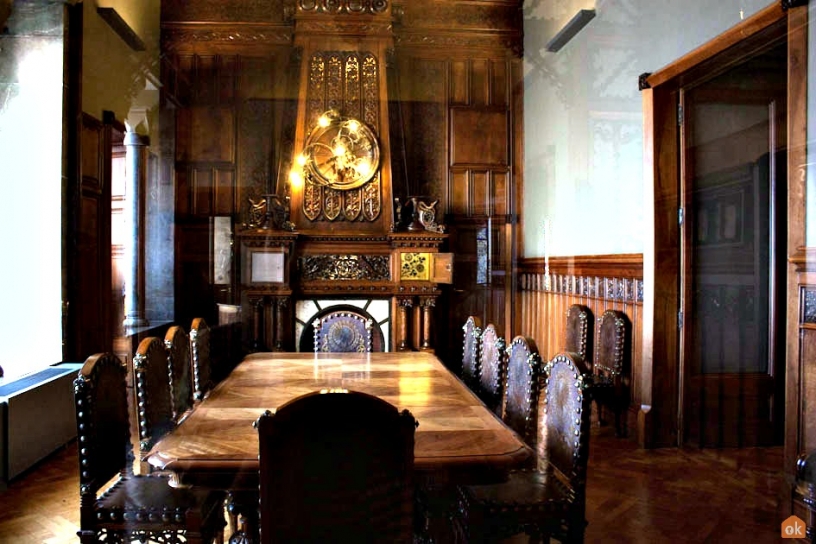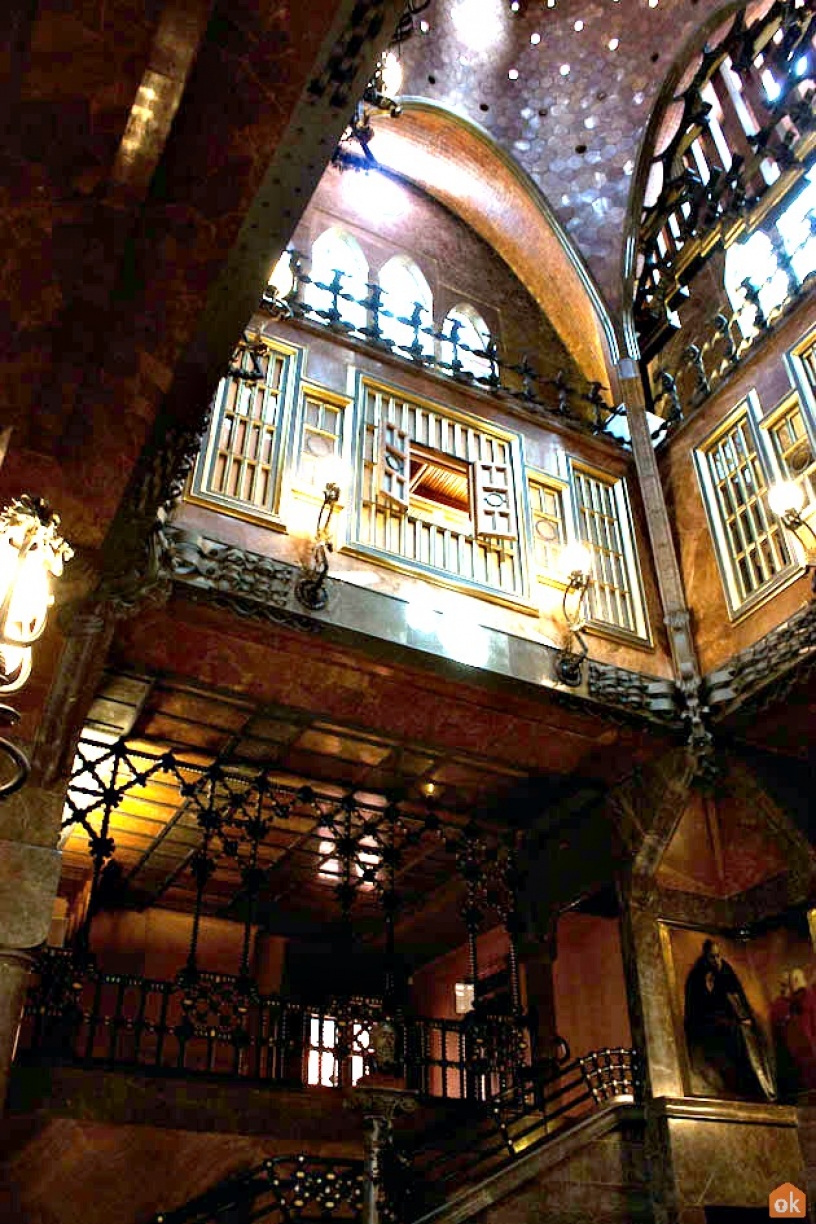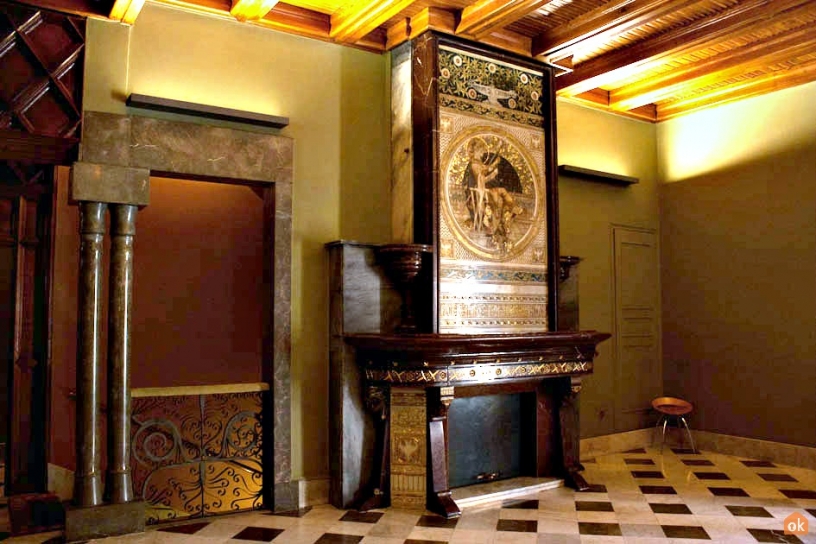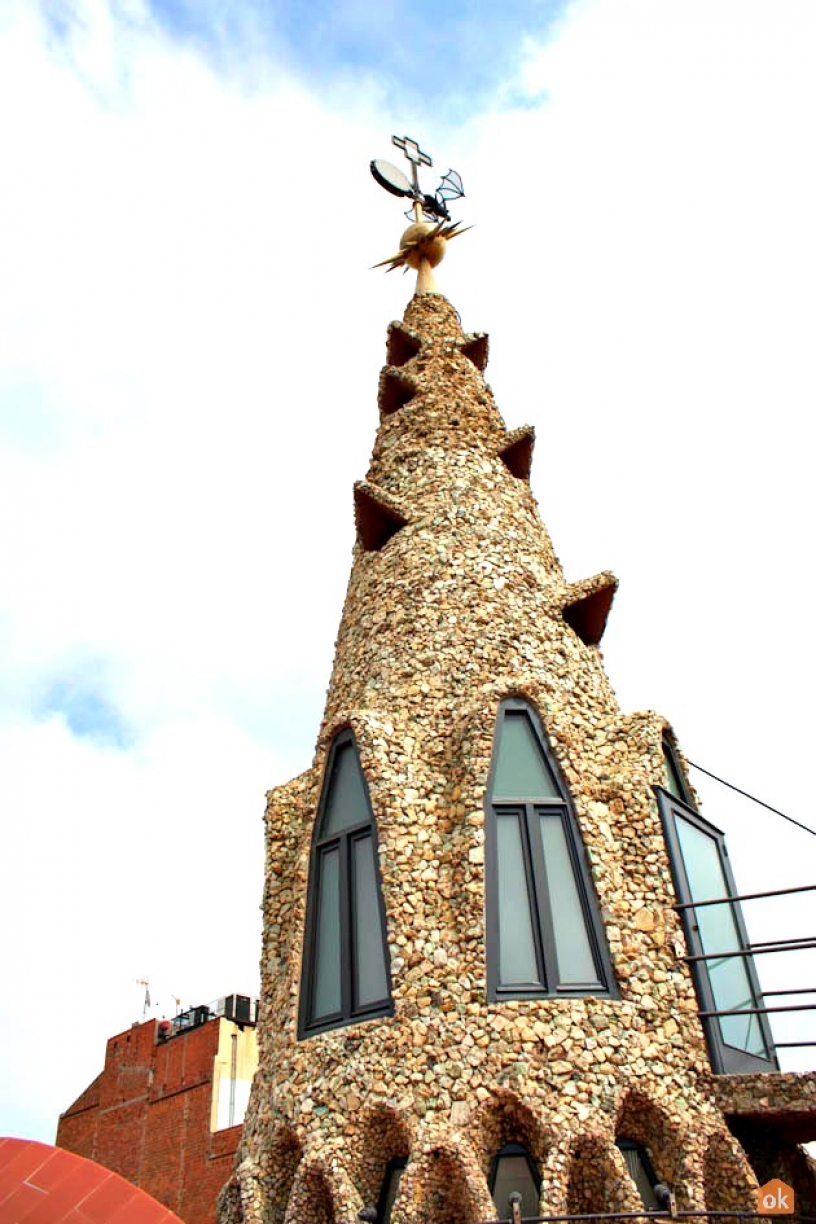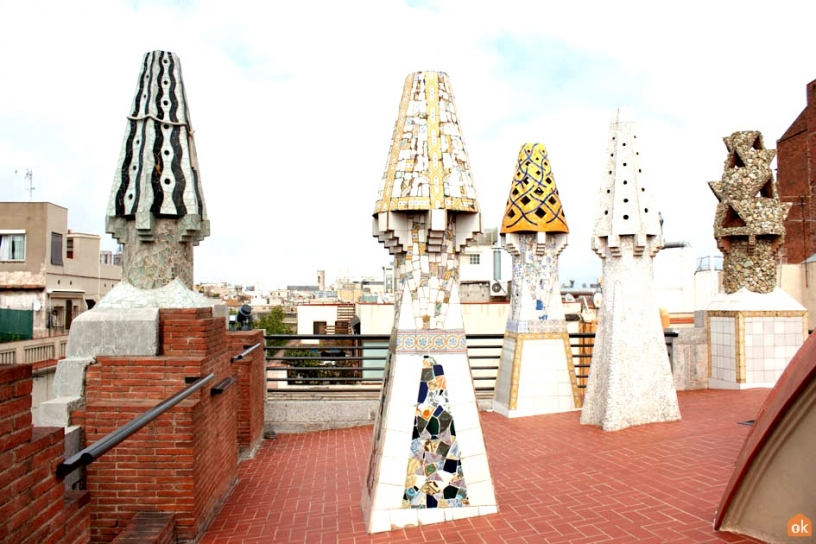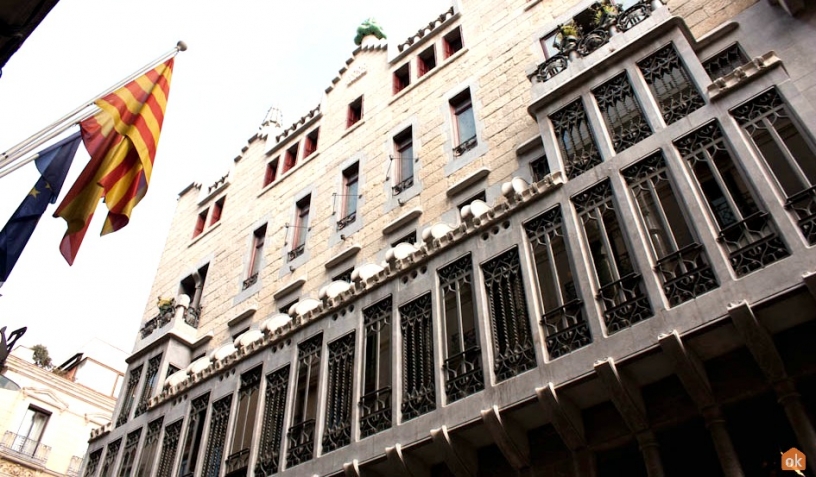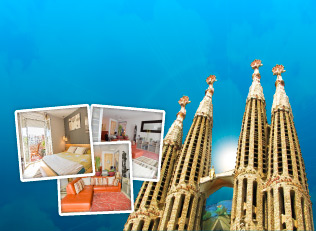Vote & Share - Buildings
The best monuments for snapping photos:
-
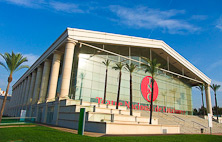 National Theater
National Theater
-
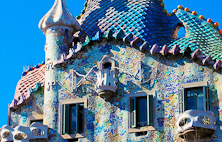 Casa Batlló
Casa Batlló
-
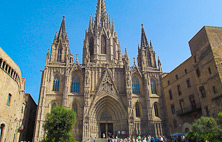 Barcelona Cathedral
Barcelona Cathedral
-
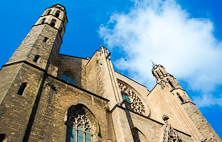 Santa Maria del Mar
Santa Maria del Mar
-
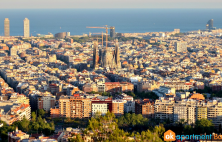 Sagrada Familia
Sagrada Familia
-
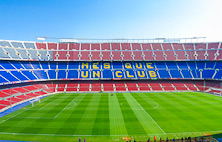 Camp Nou
Camp Nou
-
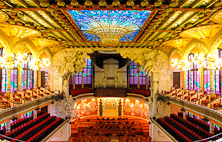 Palau de la Música
Palau de la Música
-
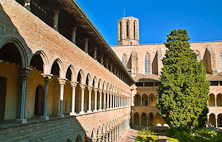 Pedralbes Monastery
Pedralbes Monastery
-
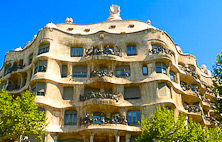 La Pedrera
La Pedrera
-
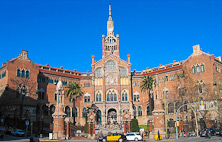 Hospital de Sant Pau
Hospital de Sant Pau
-
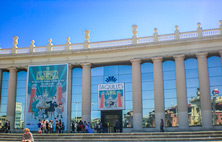 Fira de Barcelona - Montjuïc
Fira de Barcelona - Montjuïc
-
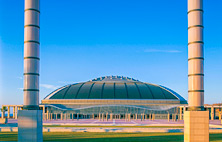 Palau Sant Jordi
Palau Sant Jordi
-
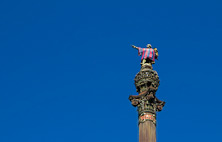 Christopher Columbus Statue
Christopher Columbus Statue
-
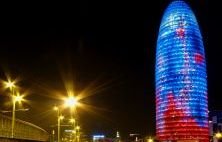 Torre Agbar
Torre Agbar
-
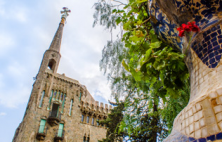 Torre Bellesguard
Torre Bellesguard
-
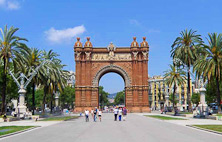 Arc de Triomf
Arc de Triomf
-
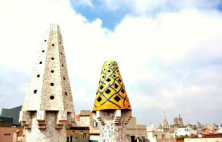 Palau Güell by Gaudí
Palau Güell by Gaudí
To get an entry for our contest, comment what you like about .
The National Theatre of Catalonia (TNC in Catalan) is one of the most important theatres in Catalonia It was opened in 1996.
The theatre building is located in plaza de les Arts, close to plaza de les Glòries and it has three exhibition rooms. It was design by the prestigious architect Ricardo Bofill.
If you come to visit the capital of Catalonia, we will help you to find the best apartment in Barcelona. We offer apartments of different types, renovated and well furnished in all areas of Barcelona!
The National Theatre of Catalonia occupies an area of 20.000 m2 and is covered by a gable roof that rests upon26 columns of 12 metres in height. The exterior of crystal allows passer-bys to see into the heated interior spaces with its plantlife.
They also offer:
- Birthday celebrations
- The TNC restaurant
- Guided tours
- Video Library
- Educational services
- Business services
Excursions in Barcelona
To make the most of Barcelona and fill your trip with unforgettable experiences and emotions, we offer you the excursions through the Catalan capital organized by our friends - the GetYourGuide team. Choose your excursion and fall in love with Barcelona:
Get to know the theatre:
From the moment of opening the theatre has been recognised not only for theatre spectacles, but also dance, music, opera, and puppets.
These days the National Theatre of Catalonia presents a varied and multidisciplinary theatre environment, with a programme apt for the whole family to enjoy.
Useful Information
- Address: Pl. de les Arts, 1
- How to get there?: Metro L1, Glòries. | Bus 6, 7, 10, 56 and 62. | Tram T4, Auditori-Teatre Nacional.
- Telephone: 933 065 700
- Web: www.tnc.cat
- E-mail: info@tnc.cat
- Book guided tours: 933 065 749
Voulez-vous visiter Casa Batlló à Barcelone? Lisez notre article et apprenez toutes les informations pratiques sur la visite de Casa Batlló, comment économiser de l'argent sur les tickets et ne pas oublier l'histoire : Gaudí, la construction de la Casa Batlló, toit de dragon, escalier et autres détails intéressants sur la perle architecturale de Barcelone . Si vous envisagez de venir vivre à la ville de Gaudi, consultez nos offres de location longue durée à Barcelone.
.If you come to visit the capital of Catalonia, we will help you to find the best vacation rentals in barcelona. We offer apartments of different types, renovated and well furnished in all areas of Barcelona!
Historique de la Casa Batlló
Casa Batlló is an architectural jewel from Antoni Gaudi. Unique, abstract, and amazing; it was built between 1904 and 1906.
It is located on Passeig de Gracia in Barcelona, within the Eixample district. Its precise location is on the Manzana de la discordia or Block of Discord in English. On this block of buildings you will find works from other modernist architects like: Casa Amatller by Josep Puig i Cadafalch; Casa Lleó Morera by Lluís Domènech i Montaner; Casa Mulleras, by Enric Sagnier i Villavecchia; and Casa Josefina Bonet by Marcel·lià Coquillat.
We give you the opportunity to learn more about its history and about Antonio Gaudí's life. You will discover some curious facts and questions such as how long it took to build Casa Batlló and which materials Gaudí used to create it:
-
 Casa Batlló: Inside, Facade & Roof Yaroslav Lebedev 09 May 2018 Touch the pure modernism architecture of Casa Batlló in Barcelona!
Casa Batlló: Inside, Facade & Roof Yaroslav Lebedev 09 May 2018 Touch the pure modernism architecture of Casa Batlló in Barcelona!
Casa Batlló is not just a building, it is already a legendary piece of art and architecture. The imaginations of Gaudí created a facade for Casa Batlló that is both original and fantastic, substituting the old facade for a new one made of stone and glass. It is one of the many representations of dragons in Barcelona.
The house measures more than 5000 sq m in total and faces Passeig de Gràcia, the rear of the building faces the courtyard of the block of buildings.
Now you can visit the main floor, former home of the Batlló family and the most magical space in the house.
This iconic building is popular amongst travellers, so if you want to beat the queues here (and at other places around the city) then read our article "Top tips to avoid queuing in Barcelona".
Excursions in Barcelona
To make the most of Barcelona and fill your trip with unforgettable experiences and emotions, we offer you the excursions through the Catalan capital organized by our friends - the GetYourGuide team. Choose your excursion and fall in love with Barcelona:
Visit Casa Batlló
Taking into account that now you know all the background of Casa Batlló in Barcelona, let me share with you my experience of visiting Casa Batlló. In the article I will tell about tips you should know about before visiting Casa Batlló, how to get a discount on tickets and how to get there:
-
 Casa Batlló: tickets and practical info Yaroslav Lebedev 12 Apr 2018 If you admire Gaudi's genius, check out our article about one of the most famous of his creatio...
Casa Batlló: tickets and practical info Yaroslav Lebedev 12 Apr 2018 If you admire Gaudi's genius, check out our article about one of the most famous of his creatio...
If you still have some doubts about whether or not to visit Casa Batlló, check their web-page:
Barcelona Cathedral - A neo-gothic wonder with lots of history and artistic value
If you come to visit the capital of Catalonia, we will help you to find the best apartments for long term in Barcelona. We offer apartments of different types, renovated and well furnished in all areas of Barcelona!
Barcelona Cathedral can be found in the heart of the city and is a centre of history, politics, and of course, religion. The more than 2000 year history of Barcelona has its origins in what we now called the Gothic Quarter of the city, so it's no surprise that the cathedral that stands before visitors today was built over an old roman cathedral, with roman walls still remaining in the close vicinity. We've included Barcelona Cathedral in our guide to the churches of Barcelona.
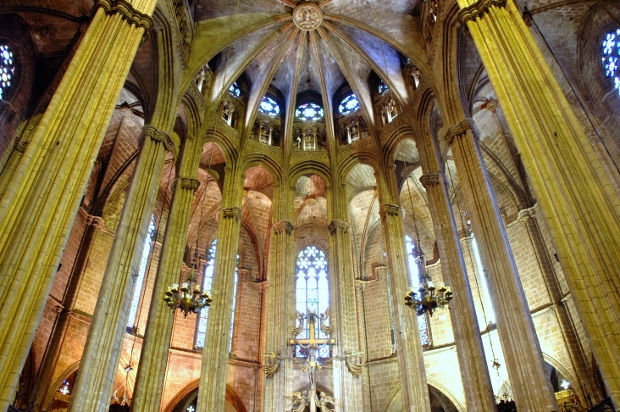
A building with history beaming from the walls
The construction of Barcelona Cathedral (or Cathedral of Santa Eulalia) was slow and full of interruptions. Construction began in the 13th century, on top of a roman cathedral, but what's interesting is that the roman cathedral was built on top of a Visigothic cathedral! Barcelona Cathedral took around 150 years to complete, and it wasn't until the end of the 19th century that the building was expanded from a modest building to the fancy neo-gothic one we see today.
Excursions in Barcelona
To make the most of Barcelona and fill your trip with unforgettable experiences and emotions, we offer you the excursions through the Catalan capital organized by our friends - the GetYourGuide team. Choose your excursion and fall in love with Barcelona:
Architecture full of artistic interest
The Cathedral was originally built in the Catalan gothic style with three naves and a single apse. It has transformed a lot since then, into a neo-gothic style. The buttresses divide the central space from the various side chapels. The building has huge windows and two large bell towers. It has five entry points; the main one, Door of Saint Ivo, Door of Mercy, Door of Santa Eulalia, and Door of Santa Lucia. It is home to enclaves of artistic and cultural interest, such as the main alter, the crypt of Santa Eulalia, the vaults, as well as a choir and organ. Of course there is much more to discover like the old and new chapter hall, the Cathedral Musuem, cloister, and the various chapels and tombs.
Useful information
- Where: Pla Seu, s/n, Barcelona
- How to get there: Metro L1/L3 - Catalunya
- Price:Free entry, but there is a fee to access the museum, bell tower, and other parts. Ranging from €2.80 to €6 per person
Description
Santa Maria del Mar is a beautiful Gothic Basilica located in the Born district of Barcelona and has a history full of mishaps.
If you come to visit the capital of Catalonia, we will help you to find the best apartments for long term in Barcelona. We offer apartments of different types, renovated and well furnished in all areas of Barcelona!
The Born district was once the centre of Barcelona in terms of commerce and marine trade during the middle ages. This area comes to live at night. The basilica of Santa Maria del Mar lies proudly at the heart of this district alongside old medieval mansions; it is an authentic example of Catalan Gothic architecture.
Before and after
After the cathedral was set on fire and left burning for 11 days, the restoration needed had slightly changed the outward appearance of Santa Maria del Mar. The interior of the church had been almost totally destroyed. The stained-glass windows also had to be reconstructed and in 1990 the restoration work was finally completed. As you can see in the pictures, the windows have been altered, there are no more stands at the side and nor does the arch next to the church exist anymore.
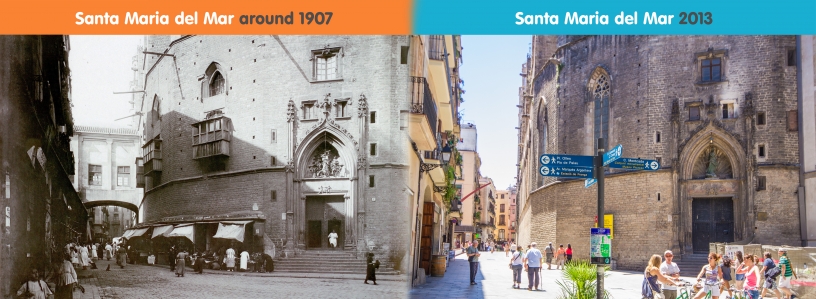
Excursions in Barcelona
To make the most of Barcelona and fill your trip with unforgettable experiences and emotions, we offer you the excursions through the Catalan capital organized by our friends - the GetYourGuide team. Choose your excursion and fall in love with Barcelona:
An eventful history
It was constructed in just 55 years, between 1329 and 1383, an amazing feat for the time. It was built by local parishioners from the harbour area, which would explain its austere style when compared to the later constructed Barcelona Cathedral.
In 1428, an an earthquake caused the main rosette window to detach as well as some rocks, causing the death of some of the parishioners. A renovation was then carried out in response which took until 1459 to complete.
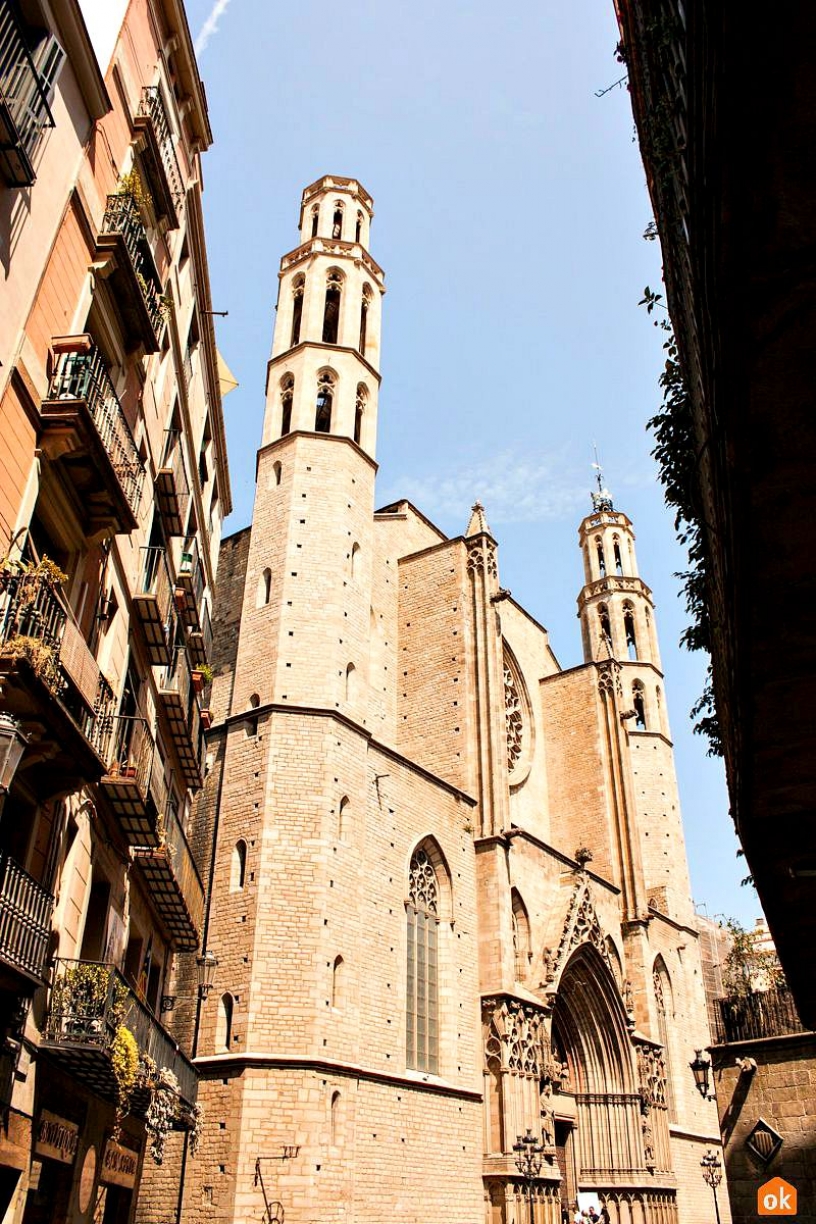
Centuries later, in 1936, a fire was caused by a group of anarchists during the civil war, but 13 years later and after some recovery, the building earned the title of a minor basilica. The severe damages were later repaired through a restoration funded by donations.
Excursions in Barcelona
Enjoy Barcelona to the full and fill your trip with unforgettable experiences and emotions reserving an excursion in the Catalan capital organized by the GetYourGuide team. Thanks to the local guides you will discover the pure life of the city and feel the soul of Barcelona! Choose your excursion and fall in love with Barcelona:
A somber gothic decoration
With its three façades adorned with images of Saint Peter and Paul, the building is a demonstration of authentic gothic architecture, with octagonal towers, arches, buttresses, gargoyles and rosettes. The interior consists of three naves of the same height and width with simple decorations.
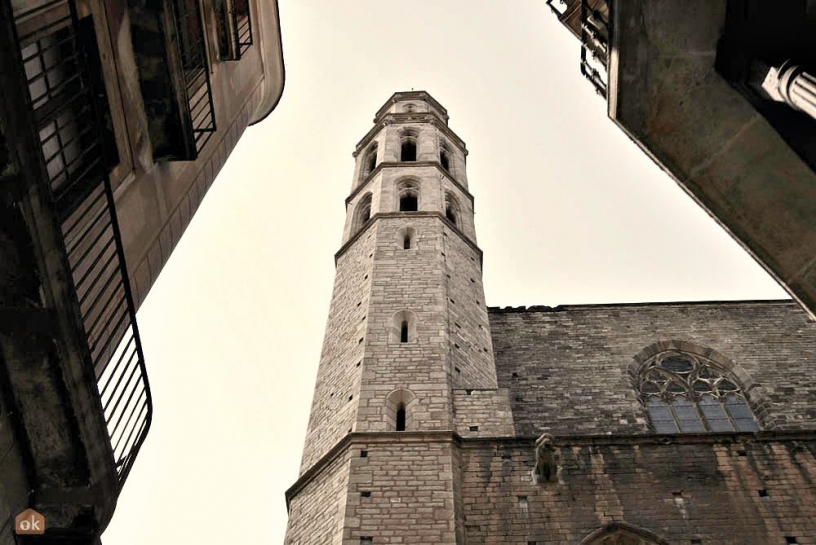
Apartments in the Born quarter
If you come to visit Barcelona, we advise you to stay in an apartment in Barcelona's Born Quarter. This way, you will know one of the most emblematic districts of Barcelona and save money since hotels are more expensive and offer you less space and comfort.
Useful information
- Where: Plaza de Santa María, 1, 08003, Barcelona
- How to get there: Metro L4, Jaume I; Bus 17, 19, 40 and 45; Barcelona Bus Turístic, Pla de Palau
- Opening hours: Monday to Saturday 9AM–1:30PM and 4:30PM–8PM. Sunday and public holidays from 10AM–1:30PM and from 4:30PM–8PM.
- Price: Free
Other images
Practical Information
- Where: Carrer de Mallorca, 401, 08013 Barcelona
- How to get there: Metro - Sagrada Familia (L2 and L5). Buses - 19, 33, 34, 43, 44, 50, 51. Tourist Bus - Sagrada Familia stop
- Opening times: April to September - 9:00 to 20:00. October to March - 9:00 to 18:00. There is a reduced opening time on Christmas. Access to the tower varies, be sure to check the official Sagrada Familia website
- Tickets: Click here.
If you come to visit Barcelona, we advise you to stay in an apartment near the Sagrada Familia. In this way, you will save and gain in comfort compared to hotels.
The most visited monument in Spain
Though it's full name is El Templo Expiatorio de la Sagrada Familia (The Expiatory Temple of the Holy Family), this building is simply known as the Sagrada Familia, a basilica designed by the Catalan architect Antoni Gaudí i Cornet. It is one of the most famous works by the artist and is the most iconic and visited monument in Barcelona with almost 5 million visitors in 2017.
-
 The interior & exterior of the Sagrada Familia
The interior & exterior of the Sagrada Familia
 Joris Leistra
24 May 2018
This article illustrates and explains the interior & exterior of the Sagrada Familia
Joris Leistra
24 May 2018
This article illustrates and explains the interior & exterior of the Sagrada Familia
Are you intrigued about the interior of the Sagrada Familia? Then check out our article about the exterior and interior of the Sagrada Familia. The exterior is breathtaking and the interior goes even further. Through the use of the stained glass windows and the columns it feels like you are in a tropical forest.
Barcelona excursions
To make the most of Barcelona and fill your trip with unforgettable experiences and emotions, we offer you the excursions through the Catalan capital organized by the GetYourGuide team.
A project with no end
Work on this project began in 1882 and it's still not complete today! The building actually started without Gaudí being part of the project, though he joined a year in and made a complete overhaul of the design. The organisation of the Sagrada Familia announced in 2011 that the basilica should be finished in 2026. But is that even possible? A political conflict will probably prevent the Sagrada Familia from being finished in 2026.
-
 Sagrada Familia Finished in 2026... or not?
Sagrada Familia Finished in 2026... or not?
 Ok Apartment
07 Jun 2018
Will the Sagrada Familia really be finished in 2026? Why is the work taking so long?
Ok Apartment
07 Jun 2018
Will the Sagrada Familia really be finished in 2026? Why is the work taking so long?
The original idea of the Sagrada Familia came from a bookseller called Josep Maria Bocabella. He funded the project, taken on by Francisco de Paula de Villar y Lozano who proposed a replica of the Basilica della Santa Casa in Loreto, Italy. After some disputes during the project though, Bocabella eventually offered the project to his assistant at the time, Antoni Gaudí, who dedicated the rest of his life to the project. He famously said when questioned about the speed of the project "My client is not in a hurry...". He passed away having completed the front façade and one of the towers.
Sagrada Familia Post-Gaudí
After Gaudí died at 73 years old in a tram accident, his assistant Doménec Sugrañes took charge of the project, finishing three columns. Sadly, during the civil war, a fire broke out in the crypt, effectively destroying many of Gaudí's original plans and directions. Construction resumed in 1944 and the new architects had to imagine many of the ideas that Gaudí must have had, leading to several theories that the church we see today may vary greatly from the original intentions of Gaudí. Regardless of whether the design adheres strictly to his plans or not, UNESCO declared the building a world heritage site in 2005, under the works of Gaudí.
-
 Visit Sagrada Familia
Visit Sagrada Familia
 Joris Leistra
24 May 2018
Join me on my visit to the Sagrada Familia and discover this impressive and stunning church
Joris Leistra
24 May 2018
Join me on my visit to the Sagrada Familia and discover this impressive and stunning church
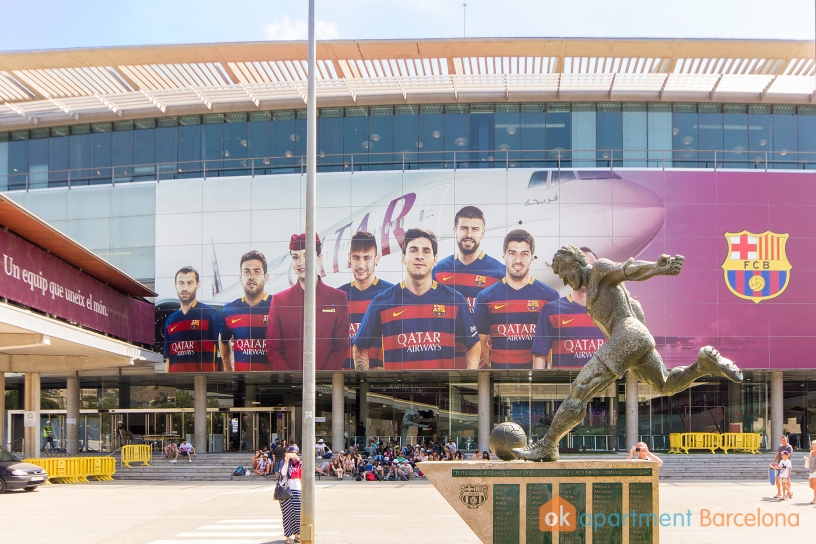
Camp Nou stadium is the biggest of its kind in Europe, the home stadium to FC Barcelona, a team with one hundred years of history and over 100,000 members.
The stadium was built on 24th September 1957. The first official match in Camp Nou took place on 6th October 1957 between FC Barcelona and Real Jaén... FC Barcelona won 6 - 1.
At the FC BARCELONA MUSEUM you can admire an impressive list of achievements of one of the teams which holds the most sporting titles in world, including 4 European Champion Cups, won in 1992 (London), 2006 (Paris), 2009 (Rome) and in 2011 (London).
The visit also allows you the opportunity to view the stadium from the grandstand of Camp Nou, the biggest stadium in Europe (and sixth biggest in the world) with a capacity for 99,354 people. It has a height of 48 metres and a surface area of 55,000 sq m.
On 12th January 1998, it was recorded as an elite category stadium by UEFA and was the second stadium in Spain to achieve this. It is located on Avenida Arístides Maillol, in the district of Les Corts, very close to Avenida Diagonal.
Before you plan a visit, take a look at our selection of the top apartment close to Camp Nou and don't forget to read this article on how to skip the queues at this and other sites in the city.
Among the installations and facilities of the stadium include:
- A small chapel next to the locker-rooms
- The executive boxes
- The VIP lounge
- The press lounge
- FC Barcelona Museum
- Various departments of the club.
- Full access for people with mobile impairments.
You can visit a majority of these facilities through the Camp Nou Experience.
If you come to visit Barcelona, we advise you to stay in an apartment near Camp Nou. This way, you will know one of the most emblematic districts of Barcelona and save money since hotels are more expensive and offer you less space and comfort.
Information
- Where?: Calle Arístides Mallol, 12
- How to get there?: Metro Line 5 (Collblanc y Badal) and Line 3 (Maria Cristina, Palau Reial, and Zona Universitària)
- Telephone: +34 902 18 99 00
- Web: Camp Nou
Other images
Excursions in Barcelona
To make the most of Barcelona and fill your trip with unforgettable experiences and emotions, we offer you the excursions through the Catalan capital organized by our friends - the GetYourGuide team. Choose your excursion and fall in love with Barcelona:
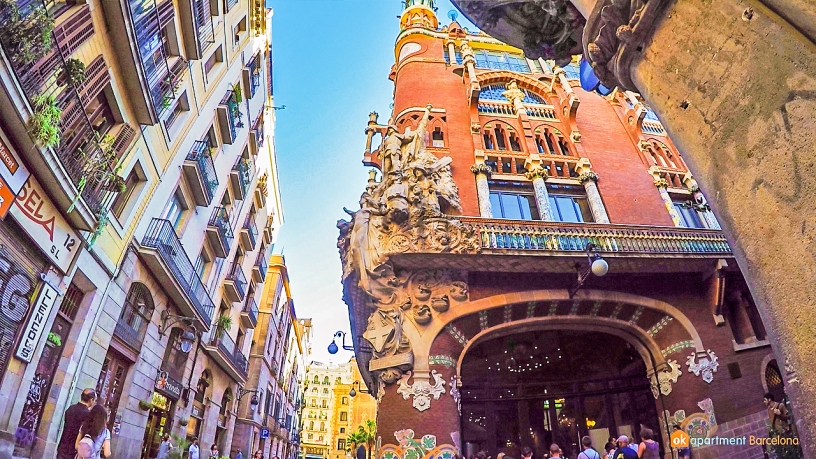
If you come to visit the capital of Catalonia, we will help you to find the best apartments for long term in Barcelona. We offer apartments of different types, renovated and well furnished in all areas of Barcelona!
The Palau de la Música Catalana is considered to be one of the main exponents of the Catalan Modernisme style. It received World Heritage Status from UNESCO in 1997.
The Palau de la Música Catalana was built between 1905-1908 by the architect Lluís Domènech i Montaner as the headquarters of Orfeó Català (the Choir of Catalonia).
Palau de la Música has six emblematic spaces:
- The concert hall where you will find the organ on the stage and a central skylight that represents the sun. The room is filled with natural light
- Petit Palau (small palace) for chamber concerts and smaller concerts.
- The rehearsal room of Orfeó Català is an intimate space for small concerts, conferences, presentations, and also where the Orfeó Català Choir practices.
- Lluís Millet hall - A large lounge and meeting are dedicated to the conductor Millet, founder of the Orfeó Català.
- The Foyer of the Palau
- The Plaza of the Palau
Excursions in Barcelona
To make the most of Barcelona and fill your trip with unforgettable experiences and emotions, we offer you the excursions through the Catalan capital organized by our friends - the GetYourGuide team. Choose your excursion and fall in love with Barcelona:
Information
- Where?: C/ Palau de la Música, 4-6
- How to get there?: Metro L1 and L4 (Urquinaona), Bus - Lines: 17, 19, 40, 45 and N8, Trains - Plaza Catalunya
- Opening hours: Everyday from 10:00 to 15:30. During easter week from 10:00 to 18:00. August from 9:00 to 20:00
- Telephone: 93 295 72 00
- Web: Palau de Música
Other images
The Royal Monastery of Santa María de Pedralbes, or simply known as Pedralbes Monastery (Monestir de Pedralbes in Catalan) is a jewel of Gothic architecture in a residential and peaceful uptown area of Barcelona.
If you come to visit the capital of Catalonia, we will help you to find the best apartments for long term in Barcelona. We offer apartments of different types, renovated and well furnished in all areas of Barcelona!
It was founded by King James II of Aragon and his 4th wife Elisenda and protected by royal decree. It housed a small community of Poor Clare nuns, an order that still occupy the building today. It was opened to the public for the first time in 1983, and is now a large part of it is a visitable museum.
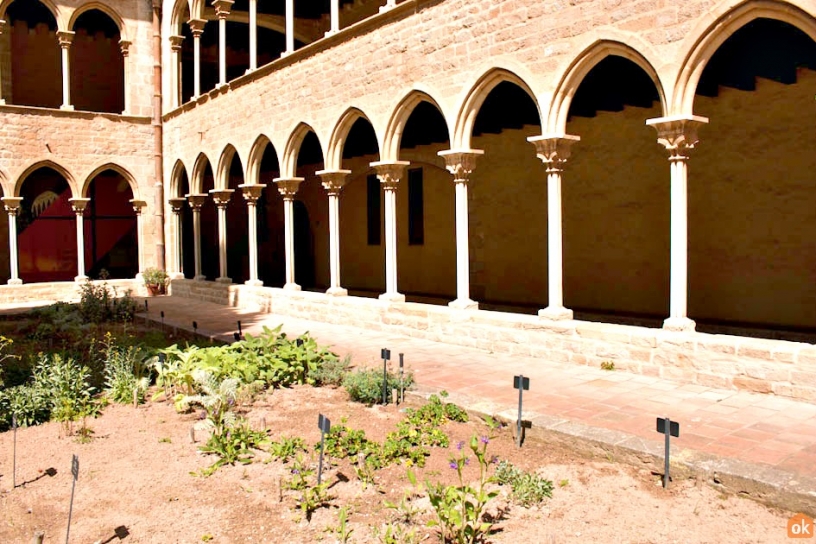
A monastery with special protection
The Monastery of Pedralbes was built in 1326 by order of James II. His wife, Elisenda was so enamored with the place and its beauty, that she proclaimed the place should be royally protected, amongst other privileges.
She had a palace built beside the monastery where she spent her life after King James II passed away. She ordered to be buried at the monastery and for the palace to be destroyed in her will, of which the remains were found in the 70s.
The history of the building is eventful, in the 17th century the nuns were expelled during the Catalan Revolt. Many years later in the 19th century, during the Peninsular War of it served as a refuge for the religious people expelled from various convents in the city.
Since 1931, the monastery has been recognized as a national monument and has became part of the History Museum. It even housed some of the Thyssen-Bornemisza art collection between 1993 and 2004 (now at MNAC), despite all of this though, many nuns still call this place their home.
Excursions in Barcelona
To make the most of Barcelona and fill your trip with unforgettable experiences and emotions, we offer you the excursions through the Catalan capital organized by our friends - the GetYourGuide team. Choose your excursion and fall in love with Barcelona:
Catalan Gothic Influences
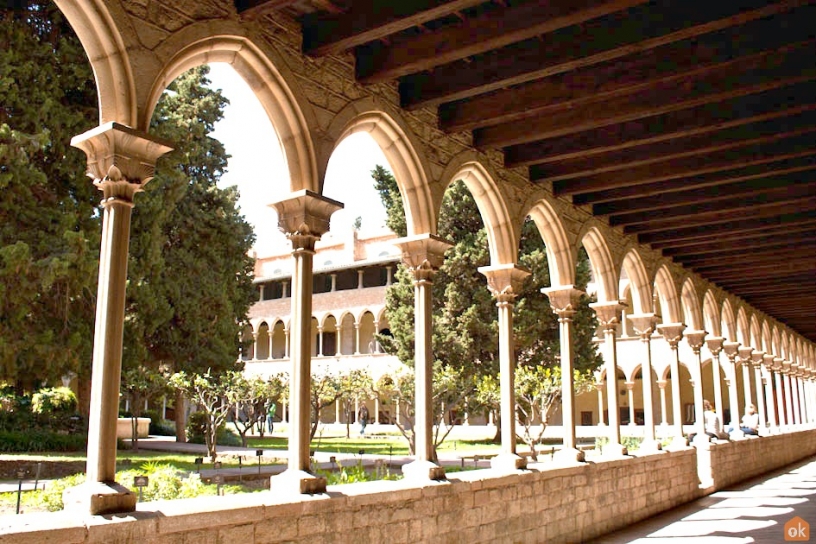
The monastery is built in the Catalan Gothic style, and consists of a single nave of three floors, formed by many arches and columns. At the centre is a cloister, and just to the side of the cloister near the church, is the tomb of Queen Elisenda, depicting her in two ways, one as she was dressed as a queen and another as she was dressed when she was a widow.
The chapel is dedicated to Saint Michael, home to various paintings by the artist Feerer Bassa. Though the church of the monastery is minimally decorated, it features sumptuous stained glass windows around its walls. In the ancient brotherhood's bedroom there are multiple works of art and religious objects collected by the nuns on display.
Useful Information
- Where: Baixada del Monestir, 9. Barcelona.
- How to get there: Overground Train (FGC): Reina Elisenda, Line 6. Buse: Lines 22, 63, 64, 75, and 78.
-
Opening hours:
- 1st April to 31st September closing times - 10:00 to 17:00 (Tuesday to Friday), 10:00 to 19:00 (Saturday), and 10:00 to 20:00 (Sunday - Free entry after 15:00)
- 1st October to 31st March - 10:00 to 17:00 (Tuesday to Friday), and 10:00 to 17:00 (Saturday and Sunday).
- Festivals - 10:00 to 14:00
- Closed on Mondays
- Colsed on 1st January, Easter Friday, 1st May, 24th June, and 25th December.
- Price: €7 for adults, €5 for over 65s and under 25s. Free for Barcelona Card holders and under 16s.
Other images
Casa Milà or La Pedrera? Either way it's a unique project by Gaudí.
If you come to visit the capital of Catalonia, we will help you to find the best holiday apartments in Barcelona. We offer apartments of different types, renovated and well furnished in all areas of Barcelona!
Casa Milà, or more affectionately known as La Pedrera, was built as a bourgeois apartment block that today is one of the most important cultural centres in Barcelona.
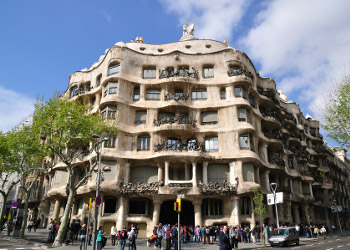
La Pedrera was built between 1906 and 1912 under the guidance of Antonio Gaudí i Cornet in response to the whim of the industrialist Pere Milà and his wife, who saw the similar Casa Batlló built on the same road, and basically "wanted one" for themselves! They wanted a building from which they could rent out the apartments. The project was not without setbacks however, it was delayed for breaking various ordinances of the city, which modified the artistic intent of the original design slightly, though Gaudí made the best of it as he could.
Though Gaudí worked on the project until its completion, he had some differences in ideas for the interior, which led Gaudí to abandon the artistic direction of the building in 1909. Since the 1920s, various modifications have been made to the interior. In 1984, UNESCO declared the building a World Heritage Site. Two years later, the building passed into the hands of Caixa Catalunya, where it has since remained. They have made the building the headquarters for the 'Fundación Catalunya-La Pedrera'. The attractions is specially adapted for visitors with hearing impairments.
Excursions in Barcelona
To make the most of Barcelona and fill your trip with unforgettable experiences and emotions, we offer you the excursions through the Catalan capital organized by our friends - the GetYourGuide team. Choose your excursion and fall in love with Barcelona:
A unique style
The modernist movement was deeply inspired by Art Noveau, a style that borrowed many of its ideas from nature. La Pedrera is no exception and even the name itself comes from the fact that the façade resembles a quarry. The lack of colours make it seem more sober than Guadí's other designs, but the forms and patterns bring the idea to life. It is one of those buildings that simply defines Catalan modernist architecture.
Discover this cultural building with intimacy
La Pedrera offers guided tours for groups:
- By day: including the roof, the Gaudí space (the old laundry room which is now a space dedicated to the architect), the apartment of La Pedrera (a recreation of how a typical apartment in this building would have looked), the patios, and the exposition room.
- By night: guided tours of the building with projections, holograms, and other activities around the theme of the magic of the night. For a bit extra, visitors can attend a Jazz concert.
- Temporary exhibits: La Pedrera has become an important cultural centre that hosts many activities such as photography and painting exhibits, conferences, as well as musical and theatrical performances. You can also attend workshops and family activities.
There is also a service that will help you to skip any queues via a VIP entrance, there are other monuments around Barcelona that offer a similar service and you can read about them here.
Useful information
- Where: Provença, 261 - 265. 08008, Barcelona.
- Cómo llegar: Buses - 7, 16, 17, 22, 24, and 28. Metro - Diagonal (L3 and L5). Train (FGC): Provença. Train (RENFE): Passeig de Gràcia.
- Opening times: Summer - 9:00 to 20:00. Winter - 9:00 to 18:30. Closed for Christmas and 7th to 13th jenuary. Opening times on 1st January - 11:00 to 18:30.
- Price: €16.50. There are special rates for children, students, and handicapped people. There are also packages that include a visit with extras like concerts or audioguides. Check the official website.
The Hospital of Sant Pau (Full name: Hospital de la Santa Creu i Sant Pau) has always been one of the main medical centres in Barcelona, and yet has also been recognized for its beauty and art. In 1997 it was declared a World Heritage Site by UNESCO, therefore it's in your best interest to visit this building if you're in Barcelona, it's completely worth it.
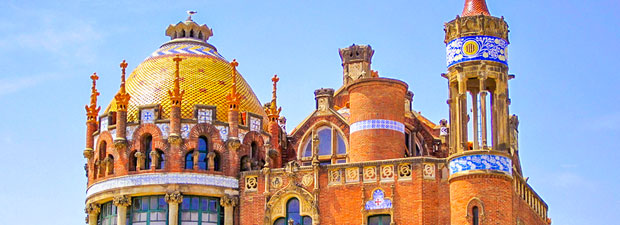
If you come to visit the capital of Catalonia, we will help you to find the best holiday apartments in Barcelona. We offer apartments of different types, renovated and well furnished in all areas of Barcelona!
A history of administrative disputes
The Hospital of Sant Pau dates back 1401 with the primary objective being to reduce the number of hospitals in the Barcelona region, formed up of 6 other hospitals. It was managed by a prior from a religious order. Throughout its history, the civil and religious powers have always fought over its management, increasing further as it eventually became the main hospital of Catalonia in the 19th century. It was taken over by the local government in 1978 and has since been a university hospital used to teach students.
Excursions in Barcelona
To make the most of Barcelona and fill your trip with unforgettable experiences and emotions, we offer you the excursions through the Catalan capital organized by our friends - the GetYourGuide team. Choose your excursion and fall in love with Barcelona:
A work of art between father and son
With the arrival of the 20th century, it was necessary to build a new building for the growing population. Therefore a new project was funded by the banker Pau Gil, which is why the hospital today is known to have Sant Pau in the name (it's not directly named after him, just the patron saint paul in his honour).
The person responsible for the project was Lluís Domènech i Montaner, also famous for his work on the modernist Palau de la Musica. Between 1902 and 1913, he built three modernist buildings, whose unique style made them stand out in the area.
History repeated itself and yet more administrative disputes arrived, eventually finance ran out and Lluis left the project. That's not the end however, as his son took over in 1920, who erected six more buildings on the site, as well as adjoining streets, parks, fountains, and an area to grow medicinal plants to the hospital. He even faced his buildings toward the sea so that patients would feel a cool sea breeze.
The Hospital today
If you're visiting the hospital today, then you'll find that the modernist structures by the Domènechs are no longer used as hospitals, but have undergone renovation for use as cultural spaces, including tours. There have been other buildings built more recently like Fundacio Puigvert, which treats patients with urological, androginal, and renal problems (more information about that specialist clinic available here).

Style
It is principally a modernist style site, however it implements styles from other eras of architecture. It emphasizes the use of bricks, something mainly found in Mudejar architecture, a style that largely inspired Lluis Domènech. The site consists of the main building and 27 smaller wards, all connected via underground tunnels. The main structure contains a library and a church, both of artistic significance. Each of the wards has its own particular style, with the buildings increasing in size the further they move from the main building.
Fira de Barcelona is one of the most important trade show centres in Europe and is split into two buildings one on Montjuïc and the other on Gran Via. Since opening in 1932, it has been the preferred hub for a whole variety of fairs, expositions, and congresses.
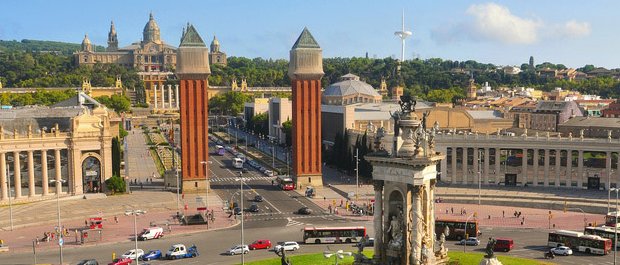
If you come to visit the capital of Catalonia, we will help you to find the best vacation rentals in Barcelona. We offer apartments of different types, renovated and well furnished in all areas of Barcelona!
A Special Place for all Manner of Events
The centre is the largest trade show complex in Spain and one of the largest in Europe. So, it's no wonder many business travellers choose to stay nearby. Many of the events that take place behind its doors are held on a global scale, with visitors from countries all over the world travelling to Barcelona for the sake of the trade shows here. This means that the space is prepared to accommodate all types of events.
The exhibition spacec combined over the two locations totals just shy of 400,000 sq metres, with the Montjuic exhibition centre coming in at 165,000 sq m. Though it's slightly smaller than the one of Gran Via, Fira de Montjuïc is much easier to access by public transport as it's beside Plaça d'Espanya.

Excursions in Barcelona
To make the most of Barcelona and fill your trip with unforgettable experiences and emotions, we offer you the excursions through the Catalan capital organized by our friends - the GetYourGuide team. Choose your excursion and fall in love with Barcelona:
What can you Visit at the Fira of Montjuïc?
The Fira celebrates around 70 expositions every year, bringing together 30,000 companies and around 2.5 million visitors to the city. You can see a list of the specific events at the Fira de Montjuïc on their website.
While the most popular event that takes place, the Mobile World Congress, takes place at Fire de Gran Via due to needing the larger capacity. Fira de Montjuïc is still the venue of choice for many of the other events such as the International Motor Show, International Comic Convention of Barcelona, and Seafood Barcelona.
What's more is that the Fira has a clear international reputation, with 43 offices around the world. Participants and visitors come from around 200 different countries to the events held here. The boost to business and international trade is their main objective.
- Where: Av. Reina Maria Cristina
- How to get there: Metro - Espanya (L1 and L3), Buses - 79, 9, H12, N1, N2, N13, N14, N15, N16, N17, 37, 46, 65, 79, 91, 109, 165, A2, CJ, L70, L72, L94, 27, N0, Aerobús, Rail - L8, S33, S4, S8, R5, R6, R50, R60
- Schedule and Prices: Dependent on the event
- Accommodation: You can stay close with our list of apartments close to the Fira
Palau Sant Jordi is a pavilion that can be found on Montjuic and home to many sports events and concerts. It is located in the Olympic area of Barcelona close to other sporting installations.Palau Sant Jordi has a surface area of 17,640 m² which gives a : 16,500 person capacity for sports events and between 4000 to 18,000 person capacity for musical events. It can also be used for meetings, parties, and other minor events.
Anyone can enjoy a show here, because it has adapted access for people with mobile impairments
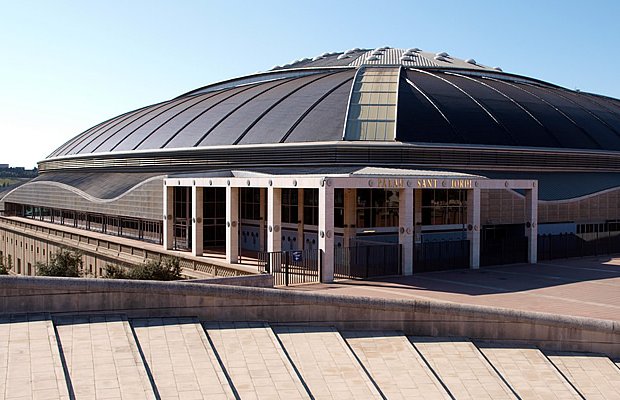
If you come to visit the capital of Catalonia, we will help you to find the best vacation rentals in Barcelona. We offer apartments of different types, renovated and well furnished in all areas of Barcelona!
Made for the Olympic Games
Palau Sant Jordi was created specifically for the Olympic Games indoor sporting events, however it was designed by the Japanese architect Arate Isozaki whose objective was to create a highly adaptable space that could change according to events.
It is considered to be the jewel of the "Montjuic Olympic Ring", an area which unities the Olympic Stadium, thePicornell Pools and the building of INEFC (National Institute of Physical Education).
Excursions in Barcelona
To make the most of Barcelona and fill your trip with unforgettable experiences and emotions, we offer you the excursions through the Catalan capital organized by our friends - the GetYourGuide team. Choose your excursion and fall in love with Barcelona:
Home to a range of events
Since it was created until today, it has held a number of events, including:
- Sporting Events: With some of the most important cups and world championships in sports like basketball, tennis, handball, indoor athletics, swimming, and more. The space is so adaptable that it has also hosted windsurfing, jet-skiiing, and motorcross under its roof.
- Concerts: Due to its capacity, comfort, and great acousitcs, the Palau Sant Jordi has been the choice of location for concerts in Barcelona for many artists. Just a few of the big names that have passed through include Metallica, Justin Beiber, Madonna, and Freddie Mercury.
- Important events and Ceremonies: From political rallies to a conference by the Dalai Lama. Palau Sant Jordi has seen it all... The MTV Europe Music Awards, opening ceremonies from the Eurogames, and live-shows like Fame, if there's an event in Barcelona that you're attending, you may find yourself here!
Information
- Address: Passeig Olímpic, 5, 08038 Barcelona
- How to get there? Bus: 55, 150, and 13, Metro: Lines 1 and 3; Plaza España. Go up the escalators located on Avenida Maria Cristina (7 minutos), Taxi.
- Telephone: 934 26 20 89
- Accommodation nearby:Apartments near Palau Sant Jordi
The Columbus Monument is one of the most famous statues in Barcelona. It can be found on Plaza del Portal de la Pau and was built to pay respects to the achievements of Christopher Columbus.
The monument was constructed on 1st June, 1888 in response to the upcoming 1888 Barcelona International Exposition. The statue measures in at a total of 60 metres in height.
The statue represents Columbus with his hand outstretched and the finger pointing towards the sea. Initially the idea was to have it pointing towards the Americas, however it would be pointing inland, which wouldn't make sense, therefore it points more or less in the opposite direction.
In the interior of the column there is an elevator that allows you to go up to just below the statue's feet, from here you can take in an excellent view of the city.
Information
- Address: Plaza Portal de la Pau, 1, 08002, Barcelona
- How to get there?: Metro L3 (Drassanes)
Other images
If you come to visit the capital of Catalonia, we will help you to find the best apartments in Barcelona. We offer apartments of different types, renovated and well furnished in all areas of Barcelona!
Torre Agbar is a known skyscraper that marks the entrance to a corporate zone of Barcelona known as 22@ in the Sant Martí district. With 145 metres in height, this building is currently the fourth tallest in the city. The other taller buildings being Hotel Arts, Torre Mapfre, and Torre La Sagrera. Of course, the Sagrada Familia will surpass it in height too, which when complete will be the tallest building in Barcelona.
The name comes from the fact that this tower is the headquarters of the multinational Agbar Group, though other companies have offices there too. Its strange form has converted the building into somewhat of a tourist attraction and is certainly a hallmark of the Barcelona skyline. It is such a symbol of Barcelona that it has been used as part of the Barcelona New Year celebrations since 2006, with a light show and chimes as the click strikes midnight.
Excursions in Barcelona
To make the most of Barcelona and fill your trip with unforgettable experiences and emotions, we offer you the excursions through the Catalan capital organized by our friends - the GetYourGuide team. Choose your excursion and fall in love with Barcelona:
Inspired by Catalonia
Torre Agbar is a work by the architect Jean Nouvel which he describes as emulating a geyser springing out of the floor... Unofficially however, to the public it represents a multitude of other objects... A geyser probably being the last on the list. Construction started in 1999 and was completed in 2005. The building is also inspired by other Catalan works like the natural forms of Gaudí's and an unfinished hotel in New York by Catalan Reus. Nouvel loves Gaudí's works so much that he designed the building's north side to permit a clear view of the Sagrada Familia.
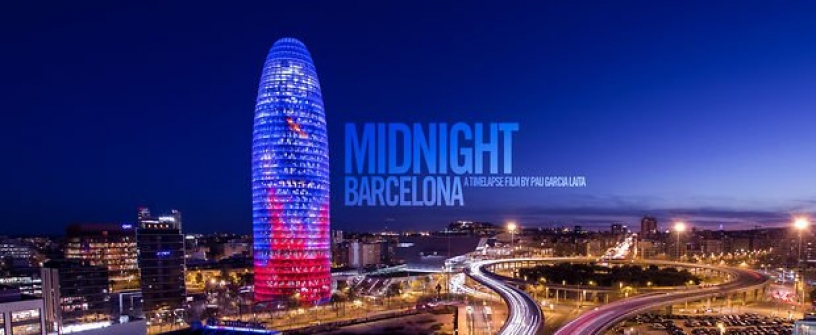
Light, colour, and nature
The building was developed as a Bioclimatic structure, which is to say it optimizes temperatures efficiently using natural ventilation and sunlight, all in an effort to reduce the carbon footprint. The colour effect is achieved by blending concrete, glass, and aluminium of varying hues, changing the colour depending on the time of day and year, in addition to the 4,500 LED lights scattered around the monument. The LEDs light up each night, changing their usual colours during special events.
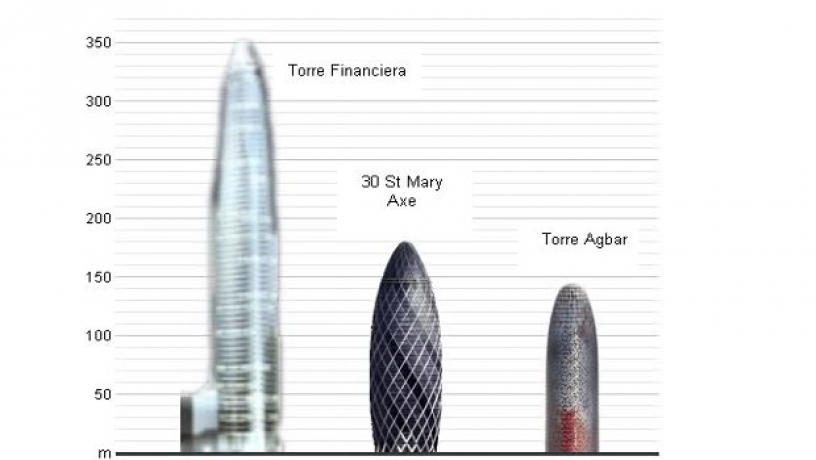
Curiosities
- In 2007, 40 workers suffered from semicircular lipoatrophy. No one knows what caused it, but it's believed that an accumulation of electrostatic fields and a lack of humidity were to blame. In Catalonia, hundreds are thought to receive this condition owing to their workplace.
- The building caused controversy for its sexually suggestive forms. The architect accepts the phallic nature of the building, through wasn't particularly impressed with the locals' nickname for the building; 'The Suppository'.
- The building has been criticized for looking too similar to 30 St Mary Axe (The Gherkin) in London
- Frenchman Alain Robert climbed the tower twice as part of awareness and peace campaigns.
- Its name has been registered by "Aigües de Barcelona" for use as an alcoholic beverage. Though this may simply be a measure to protect the brand and prevent someone else doing so and using it.
Useful Information
- Where: Avinguda Diagonal, 211, 08018 Barcelona
- How to get there: Metro - Glòries (L1). Bus - 7, 56, 60, 92, 192, B21, N2, N0, N7
- Opening Hours: Monday to Friday - 08:00 to 22:00. Closed on Saturdays and Sundays.
If you come to visit the capital of Catalonia, we will help you to find the best apartment in Barcelona. We offer apartments of different types, renovated and well furnished in all areas of Barcelona!
Think you have Gaudí all figured out? Think again. As part of his long spanning career the artist went through a Neo-Gothic phase, the culmination of which led to this building; the fantastic Torre Bellesguard, which can be found in the uptown part of the city.
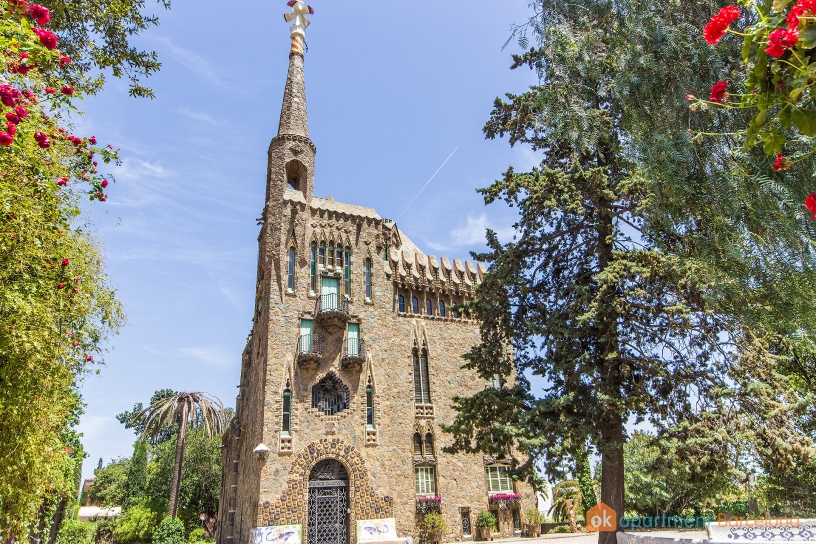
Now open to the public
The building itself has always been privately owned, and the most recent owners are the Guilera family. For many years, this architectural gem has been closed from public access, but fortunately, Torre Bellesguard officialy opened its gates to the public in September 2013. When visiting, the Guilera Family are more than happy to welcome guests themselves as they frequently wander around the grounds of the building. It's just one of the many things that make this attraction so unique.
So what can someone expect when visiting their beautiful home? Well unlike any of the other buildings from Gaudí, Bellesguard is built upon historical ruins, which were once the fortified country home of the last Count of Barcelona (King of Aragon Martin I). The structure has lots of history to boast, a fact which a genius like Gaudí obviously did not to hesitate to utilize in his designs. It is absolutely full of signature Gaudí symbolism, so not only do visitors get to learn about the history of Catalonia, they also get an insight into the mind of a genius. For example, one way that Gaudí masterfully retells the history of the grounds by using the sunrise and sunset... How he does this of course, becomes obvious during the tour ;).
Excursions in Barcelona
To make the most of Barcelona and fill your trip with unforgettable experiences and emotions, we offer you the excursions through the Catalan capital organized by our friends - the GetYourGuide team. Choose your excursion and fall in love with Barcelona:
Bellesguard's big secret...

Gaudí loved to use dragons in his designs, and you can see one in practically all of his creations. In Park Güell there is the Dragon Fountain, in Finca Güell he made Dragon Gates... And every knows that Casa Batllo was the first Gaudí design to represent the dragon from the "St George and the Dragon" tale, right? Wrong. You see, Gaudí began designing Torre Bellesguard first... and you guessed it... The building also represents the very same dragon, with the spire representing the lance St George used to slay it. Gaudí loved to play tricks like this, and you'll discover these other examples in this article about dragons in Barcelona.
Useful Information
- Address: Carrer Bellesguard, 16-20, 08023, Barcelona
- How to get there:
- Buses from city centre - 58, 22, 60
- FGC Line 7 - Exit at Av. Tibidabo
- Tourist Buses - Sightseeing Bus Blue Route or Barceona City Tour East Route
- Tour prices:
- Guided tour (interior and exterior) - €16 general, €12.80 for under 18s/pensioners, and free for under 8s
- Audio Guide (exterior only) - €7 general, €5.60 for under 18s/pensioners, and free for under 8s
- Tour Times: English (Monday - Saturday at 11AM), Spanish (Monday, Wednesday and Friday at 12PM), Catalan (Tuesday, Thursday and Saturday at 12PM)
- Reserve a tour: Bellesguard Tour Reservations Page
- More information: On the Official Torre Bellesguard Website
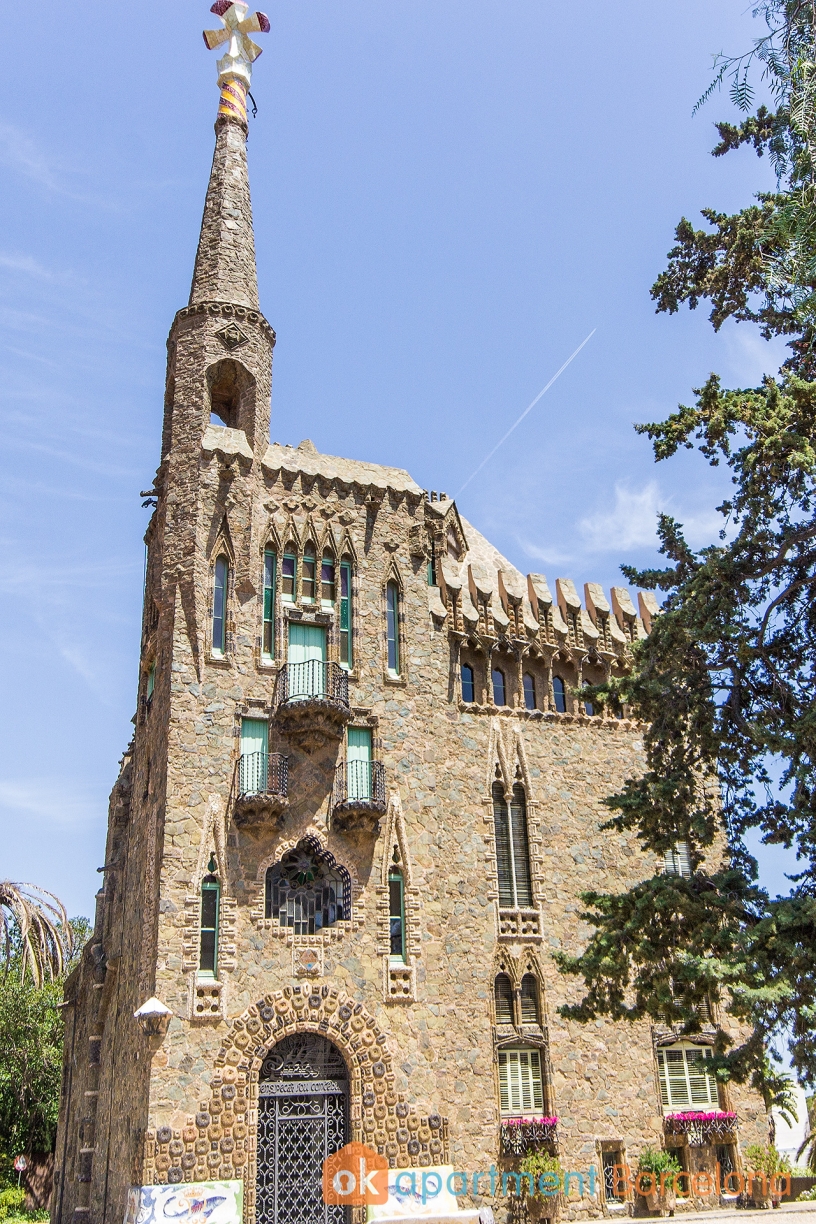
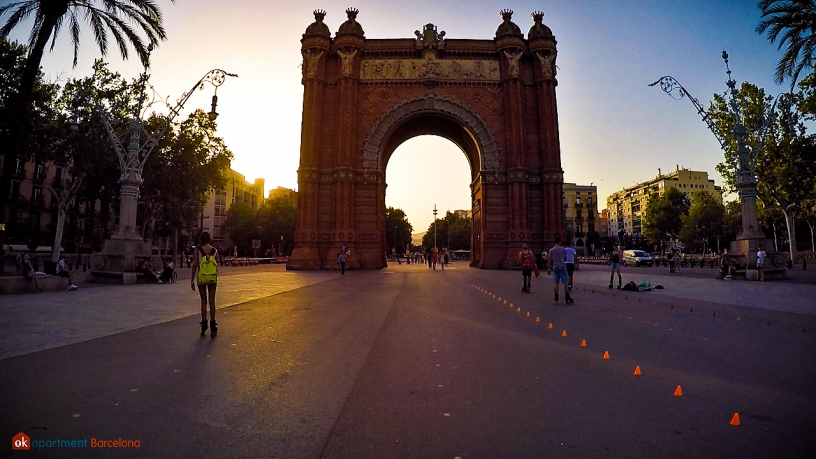
If you come to visit the capital of Catalonia, we will help you to find the best apartment in Barcelona. We offer apartments of different types, renovated and well furnished in all areas of Barcelona!
Barcelona greets the world through the Arc de Triomf
The Arc de Triomf in Barcelona was built for the Universal Exhibition in 1888 as a symbol of welcome for visitors from all over the world. It can be found on Passeig Lluis Companys, close to the Parque de la Ciutadella.
A warming welcome to the city
The Arch was built by Josep Vilaseca i Casanovas to serve as the main entrance to Parc de la Ciutadella, where the Universal Exhibition of 1888 was held.
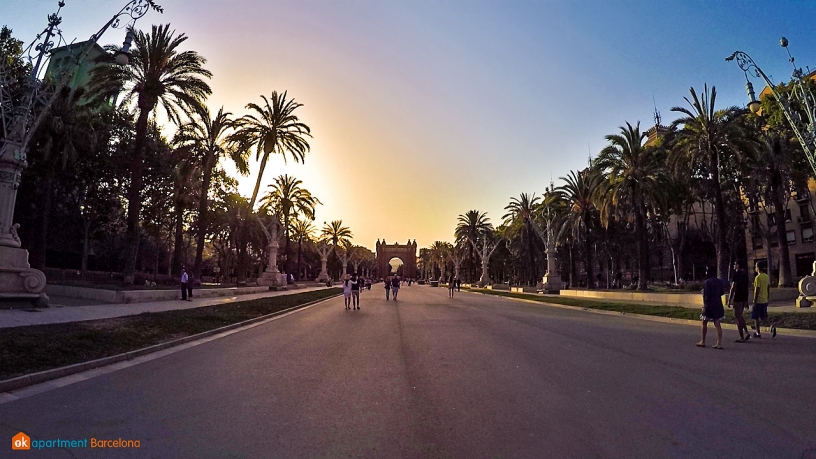
Excursions in Barcelona
To make the most of Barcelona and fill your trip with unforgettable experiences and emotions, we offer you the excursions through the Catalan capital organized by our friends - the GetYourGuide team. Choose your excursion and fall in love with Barcelona:
Neo-Mudéjar style
Built from bricks, this monument takes on the moorish style of Mudéjar in the same way that neo-gothic revived the gothic style, adding careful details and blending the monument with classical era elements. The reliefs on both sides of the structure represent agriculture, industry, commerce, and art. Above all, on the frieze, you can see the shields of the Spanish provinces. These adornments were made by various sculptors.
The mystery of the bats
One set of sculptures stands out as a curiosity; there are two bats that represent what used to be on top of the Barcelona's coat of arms. They are no longer relevant today as the bat was eventually removed from the Barcelona coat of arms before the twentieth century, leaving some tourists baffled to their significance... No one truly knows why the bat vanished from the coat of arms. Perhaps it was to do with the symbol's association with the Crown of Aragon... We can only guess!
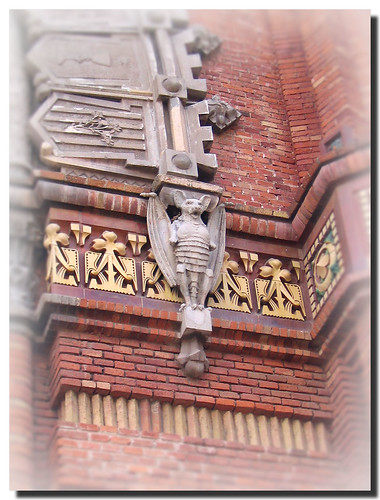
Useful Information
- Where: Passeig Lluís Companys
- How to get there: Metro - Arc de Triomf (L1). Bus - 19, 39, 40, 41, 42, 51 and 55. Train (RENFE) - Arc de Triomf.
The Palau Güell was one of the first important commissions Gaudí received at the beginning of his career. It was built between 1886 and 1890 and was eventually declared a UNESCO World Heritage Site in 1984 after being declared a Spanish National monument in 1969. It is an urban mansion and a splendid example of domestic architecture in the context of Modernism.
If you come to visit the capital of Catalonia, we will help you to find the best apartment in Barcelona. We offer apartments of different types, renovated and well furnished in all areas of Barcelona!
Because it is one of the architect's first buildings alongside Casa Vicens, we can see how the skills of this internationally renowned architect developed from his early career; by studying these works we can begin to understand him more clearly.
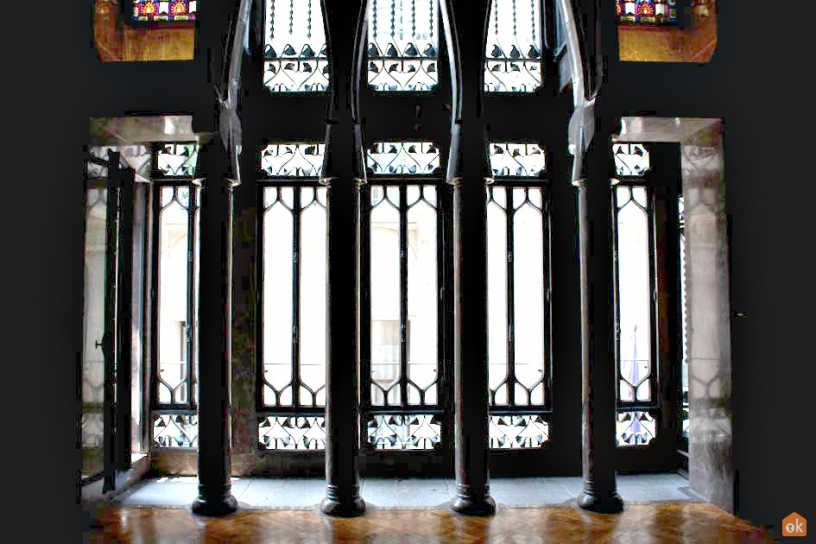
History and style
The industrial and political Eusebi Guell requested this building from Gaudí in 1886, as a unique urban space for a large family home by Las Ramblas. It was indeed the home of the Güell i López family until they moved to Park Güell, also by Gaudí.
Among the main challenges Gaudí faced was the relatively little space on the plot of land in the already dense Old City centre of Barcelona. The architect was, however, able to design a functional building adapted to the needs of the private and social life of the family. The building stands out for its innovative use of space and light. Some rooms are found on different levels, such as the main hall for the guests of high society. Gaudí also - as is expected of him - added a personal touch to the structure, creating expressive forms from his imagination, using materials such as ceramics, wrought iron, glass, and more.
Excursions in Barcelona
To make the most of Barcelona and fill your trip with unforgettable experiences and emotions, we offer you the excursions through the Catalan capital organized by our friends - the GetYourGuide team. Choose your excursion and fall in love with Barcelona:
Architectural structure
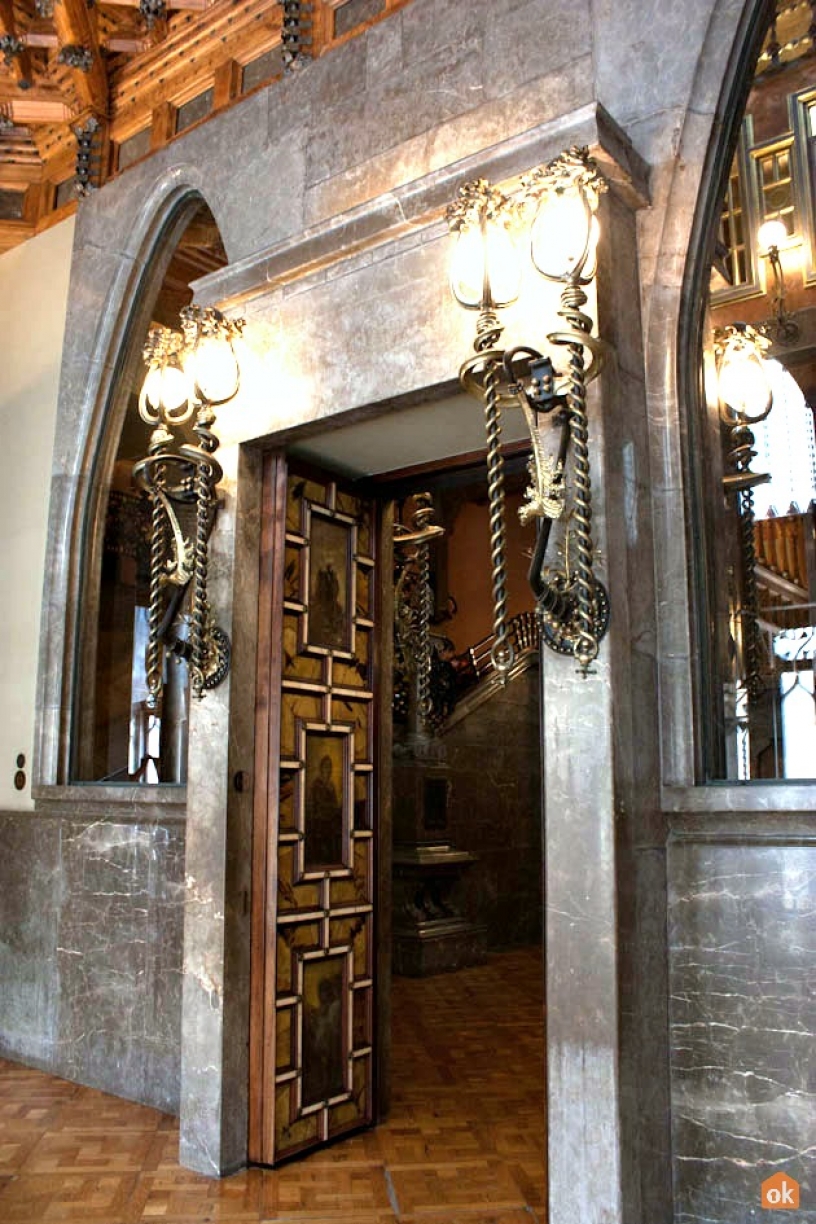
The mansion extends over several levels and consists of mix of private rooms and rooms for guests. The basement of the Palau was used as a stable for people to access the building via horse and carriage. You can still access the building through this entrance - a gentle ramp that is used to raise and lower the horse, in addition to the stairs (almost spiral) used by people on foot.
The ground floor is currently used for concierge services. It was initially storage for agricultural products, the caretaker's house, and the place where the aforementioned carriages were left. On the upper floor (mezzanine) was Eusebi Guell's office to manage and store documents, in addition to a private library.
Then on the first floor is where the building clearly takes the form of a mansion. The rooms are distributed on either side of the central hallway, and floor to floor. They include the lobby, guest waiting rooms (where visitors waited before entering the main hall), main hall (covered by a splendid dome), 'Trust room' (where people trusted by the family met and spoke among friends), dining room, billiard room, and finally terrace.
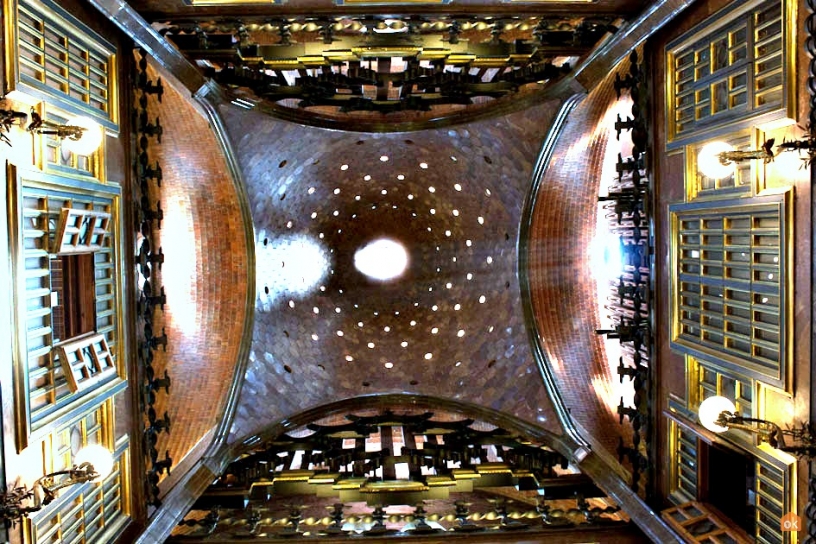
If you head up a little further, you reach a large attic - once a space for housework like laundry and kitchen of the Palau's staff, but today where concerts are held. After this space, you can reach the bedrooms of both the adults and children, spread over a long hallway, and bathroom. For more information on the rooms, visit the official website of the Palau.
For more photos of the bedrooms, head on over to our Palau Guell Pinterest Board!
The roof
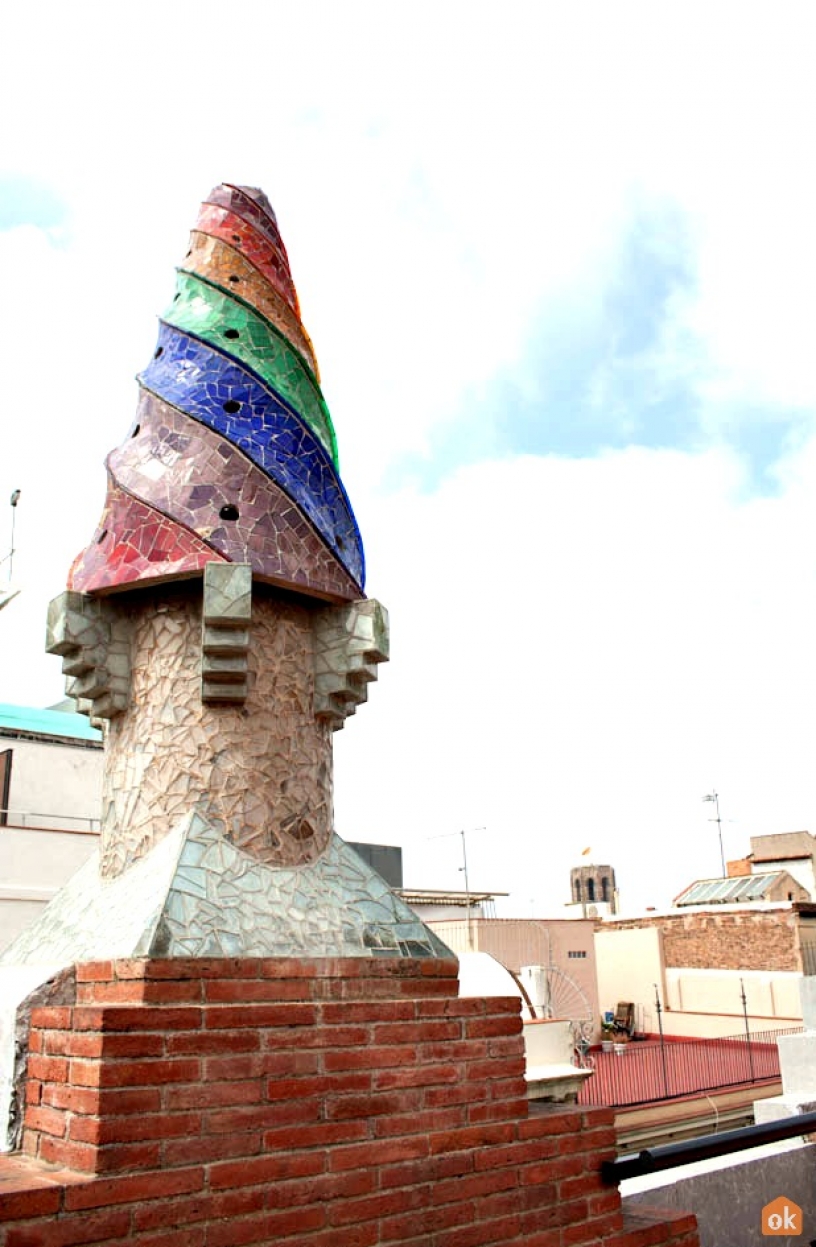
The roof of Palau Guell is one of the most magical of all his works. It is known for its 20 chimneys, including the main one that measures 15 metres. Each chimney is a true work of art of ceramic, colour, and unusual shapes that only Gaudí could imagine. From here you can also enjoy a splendid view of the city. In the distance, one can see Montjuïc, Barcelona Cathedral, and Santa María del Mar.
Useful information
- Where: Carrer Nou de la Rambla, 3-5
- How to get there: Palau Güell is found in the Raval district. The closest Metro stations are Liceu or Drassanes of the Green line (L3). By bus, the stops nearby are from buses 14, 59, 91, 120, and the Barcelona Tourist Bus
- Disabled access: Palau Güell has specialized services for disabled visited. More information on this page.
- Opening times: Summer opening times (1st April - 31st October) - 10:00h to 20:00h (Ticket office closes at 19:00h). Winter opening times (1st November - 31st March) - 10:00h to 17:30h (Ticket office closes at 16:30h). Closed on Mondays (unless public holiday), 25th and 26th December, and 1st and 6th January.
- Price: €12 standard entry. For information on other tickets and discounted rates visit their website. Tickets can be bought on their website of via the ticket office beside the building.
- Accommodation nearby: Take a look at these apartments in the Raval neighbourhood to stay near Palau Guell.
More advice
Within the building they make guided visits in English and Catalan. You can also visit the building through themed tours, which allow guests to discover unusual aspects of the attraction through unique perspectives. Availability of themed tours can be consulted here.
More photos
Participate. Share. Win.
Lastest articles
-
 Top 7 Language Schools in Barcelona
Relax and learn Spanish at your own pace in Barcelona.
Top 7 Language Schools in Barcelona
Relax and learn Spanish at your own pace in Barcelona.
-
 Outline of the best Barcelona events in March
Spring is coming, and so are these fantastic events!
Outline of the best Barcelona events in March
Spring is coming, and so are these fantastic events!
-
 Top activities for everyone in Barcelona
Barcelona is one of a few must-see cities with its own identity. There is something to delight everyone.
Top activities for everyone in Barcelona
Barcelona is one of a few must-see cities with its own identity. There is something to delight everyone.

